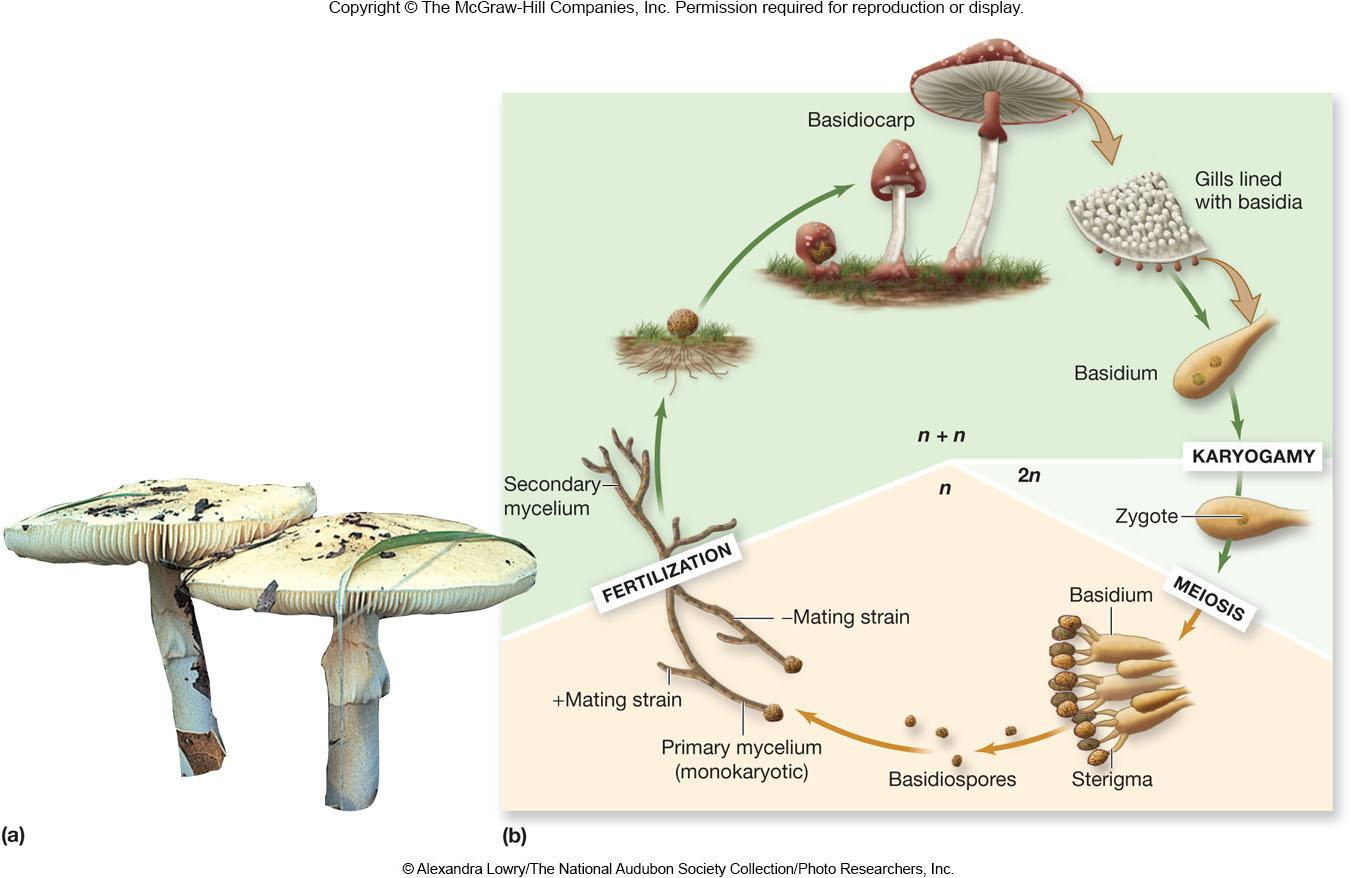L10 Claffications And Introduction of Some Bacterias
一、Environment Influence the Microbial Type
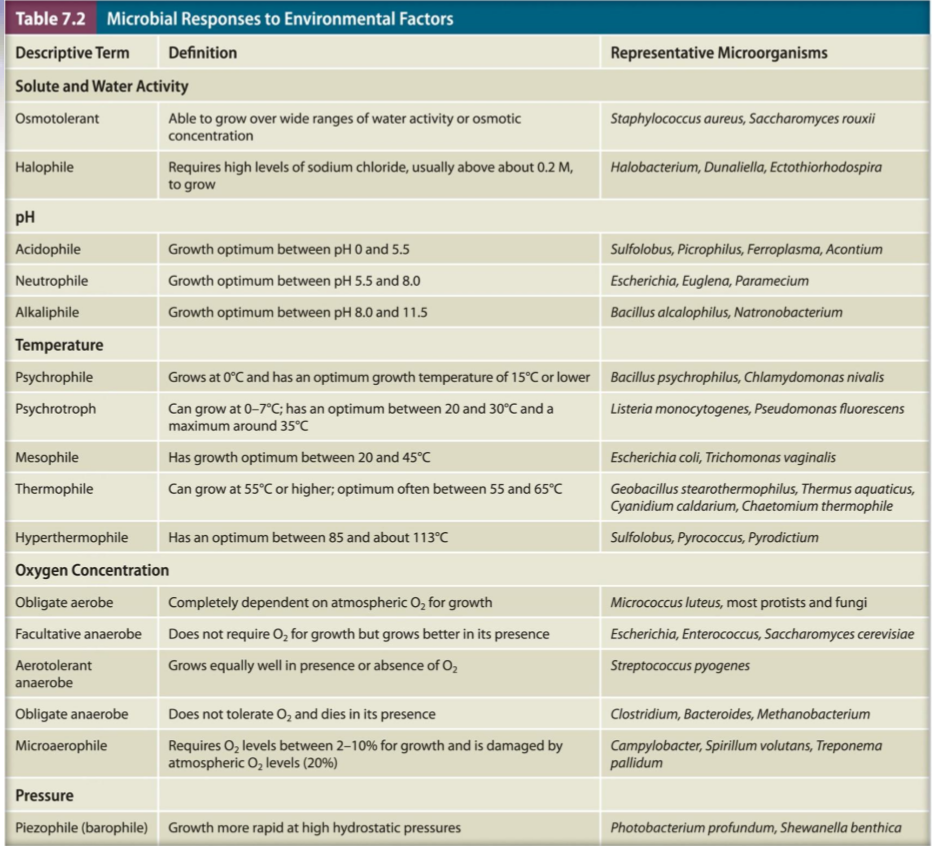
Osmotic Concentrations
- Reduce osmotic concentration of cytoplasm in hypotonic solutions
– mechanosensitive (MS) channels in plasma membrane allow solutes to leave
- Increase internal solute concentration with compatible solutes to increase their internal osmotic concentration in hypertonic solutions
1. Halophiles 嗜盐菌
grow optimally in the presence of NaCl or other salts at a concentration above about 0.2M
2. Extreme halophiles 极端嗜盐菌
require salt concentrations between 2M and 6.2M (saturation)
– cell wall, proteins, and plasma membrane require high salt to maintain stability and activity
3. Nonhalophile 非嗜盐菌
4. Moderate Halophile 中度嗜盐菌
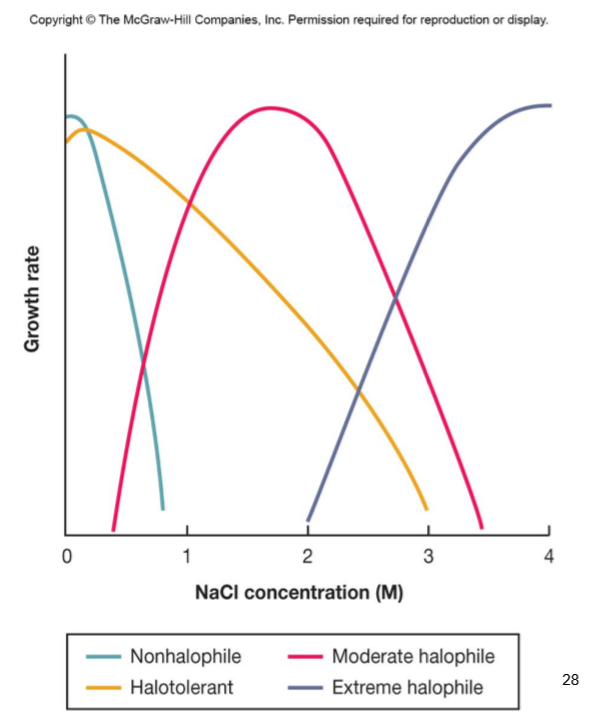
pH
Most microbes maintain an internal pH near neutrality:
- the plasma membrane is impermeable to proton
- exchange potassium for protons
Many microorganisms change the pH of their habitat by producing acidic or basic waste products
1. Acidophiles 嗜酸菌
growth optimum between pH 0 and pH 5.5
Acidic tolerance response
- pump protons out of the cell
- some synthesize acid and heat shock proteins that protect proteins
2. Neutrophiles 嗜中性菌
growth optimum between pH 5.5 and pH 8
3. Alkaliphiles (alkalophiles) 嗜碱菌
growth optimum between pH 8 and pH 11.5
Temperature
Microbes cannot regulate their internal temperature
Organisms exhibit distinct cardinal growth temperatures: Minimun, Optimum, Maximum
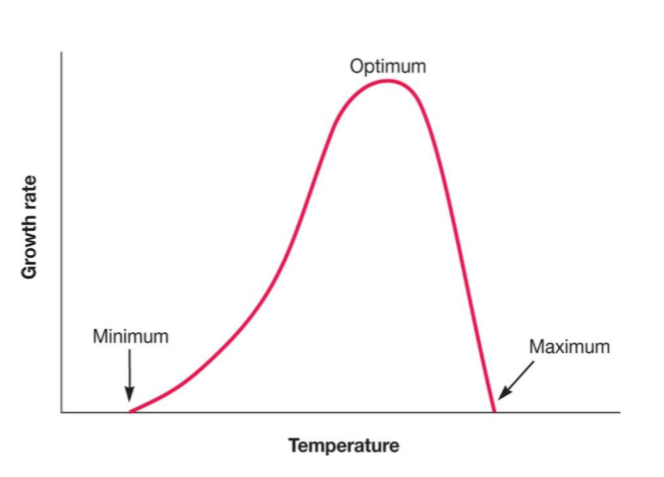
Protein structure stabilized by a variety of means:
- more H bonds
- more proline
- chaperones
Histone-like proteins stabilize DNA
Membrane stabilized by variety of means:
- more saturated, more branched and higher molecular weight lipids
- ether linkages (archaeal membranes)
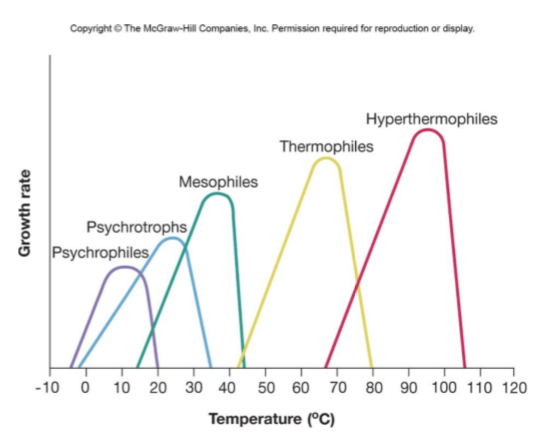
1. Psychrophiles 嗜冷菌
0 to 20℃
2. Psychrotrophs 耐冷菌
0 to 35℃
3. Mesophiles 嗜温菌
20 to 45℃
4. Thermophiles 嗜热菌
45 to 85℃
5. Hyperthermophiles 超嗜热菌
85 to 113℃
Oxygen
Oxygen easily reduced to toxic reactive oxygen species (ROS)
- superoxide radical
- hydrogen peroxide
- hydroxyl radical
Aerobes produce protective enzymes
- superoxide dismutase (SOD)
- catalase
- peroxidase

1. Obligate aerobe 专性需氧微生物
在有氧条件下才能存活的微生物。
requires $O_2$
2. Microaerophiles 微需气细菌
requires 2–10% $O_2$ (damaged by atmospheric level, 20%)
3. Facultative anaerobes 兼性厌氧菌
do not require $O_2$ but grow better in its presence
4. Aerotolerant anaerobe 耐氧性厌氧菌
grows equally well whether $O_2$ is present or not
5. Obligate anaerobe 专性厌氧菌
仅能进行无氧呼吸,且无法在正常大气(氧含量21%)等富氧环境下存活的微生物。
6. Strict Anaerobic Microbes
all strict anaerobic microorganisms lack or have very low quantities of
superoxide dismutase
catalase
anaerobes must be grown without O2
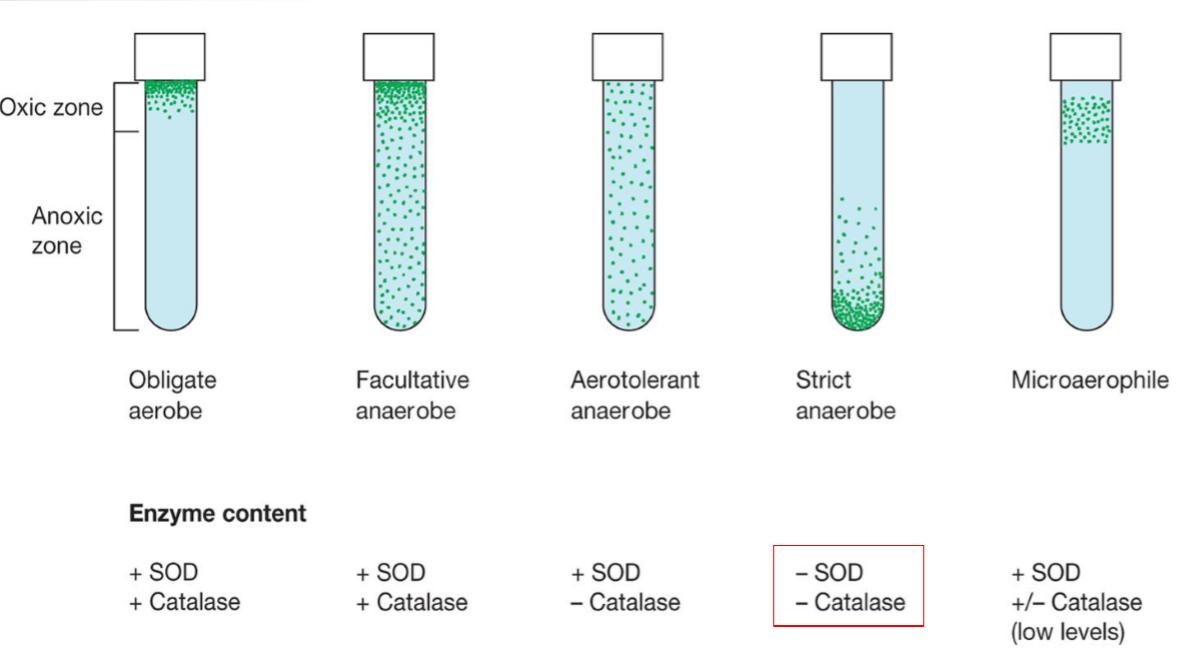
Pressure
1. Barotolerant 耐压微生物
Adversely affected by increased pressure, but not as severely as nontolerant organisms
2. Barophilic (peizophilic) 嗜压微生物
require or grow more rapidly in the presence of increased pressure
change membrane fatty acids to adapt to high pressures
二、Bergey‘s Manual of Systematic Bacteriology
Accepted system of bacterial taxonomy
Descriptions of all bacterial species currently identified
三、Archaea
Many features in common with Eukarya(真核)
- genes encoding protein: replication, transcription, translation
Features in common with Bacteria
- Genes for metabolism
Other elements are unique to Archaea
- unique rRNA gene structure
- capable of methanogenesis
Taxonomy:
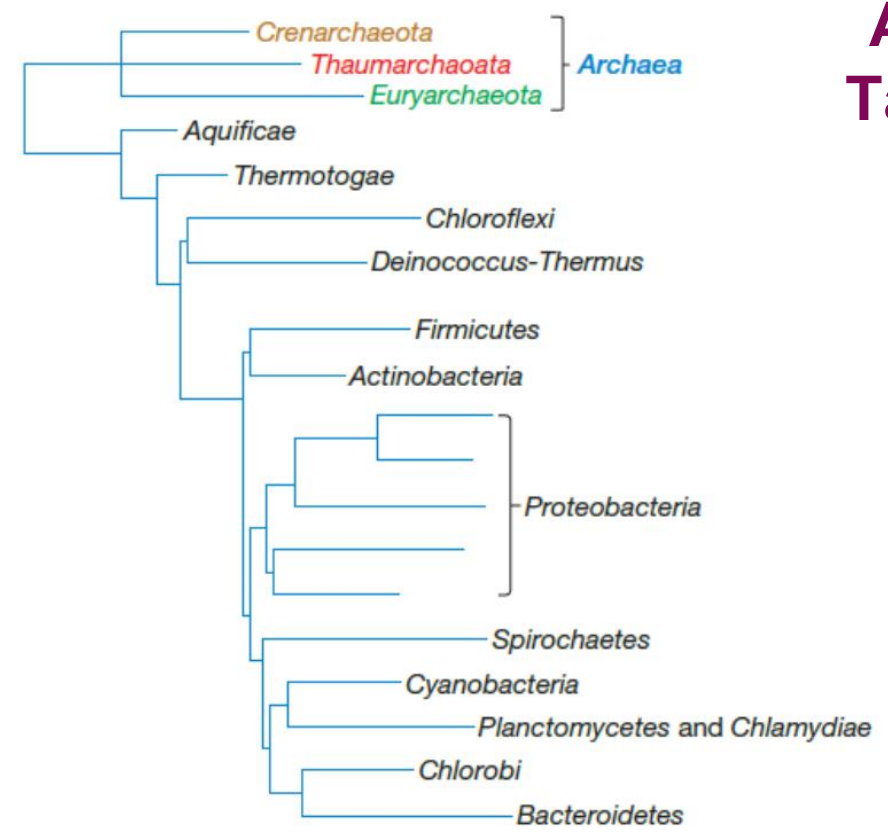
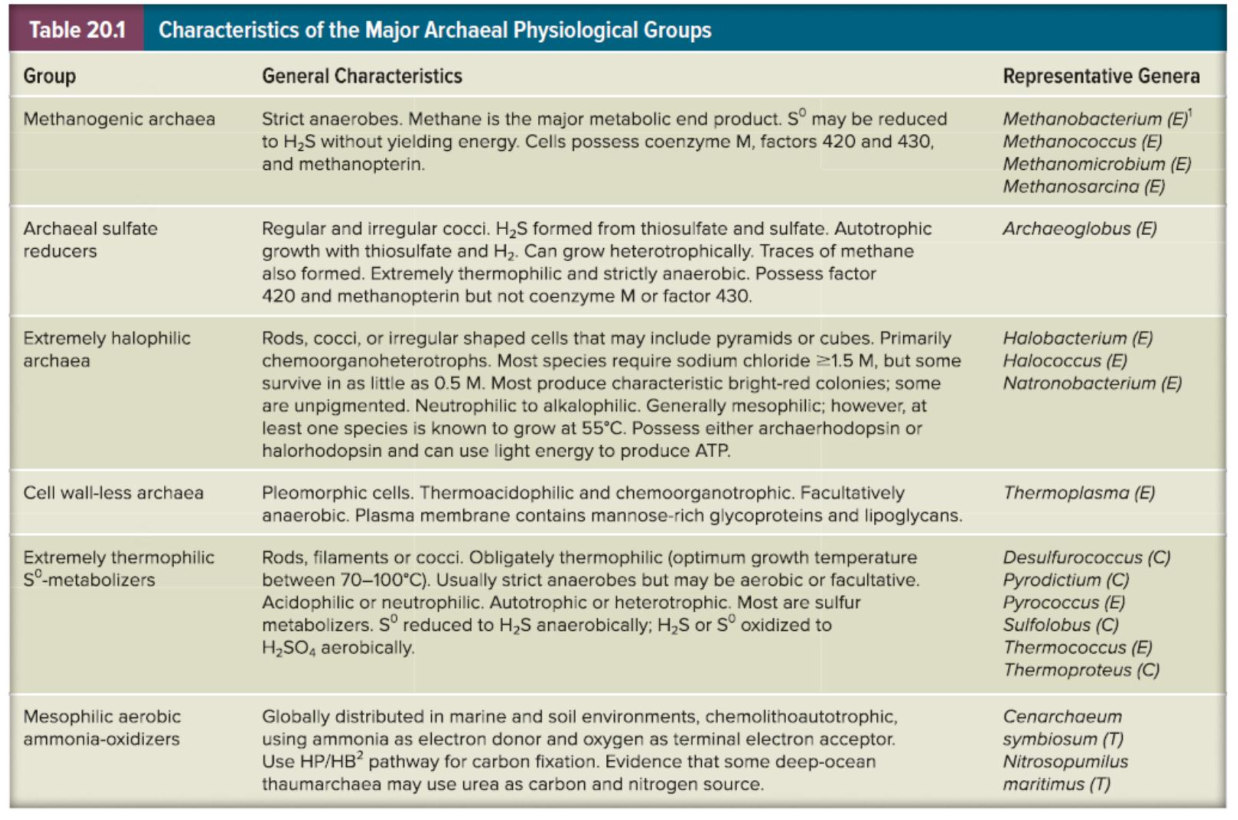
Phylum Crenarchaeota 泉古菌门
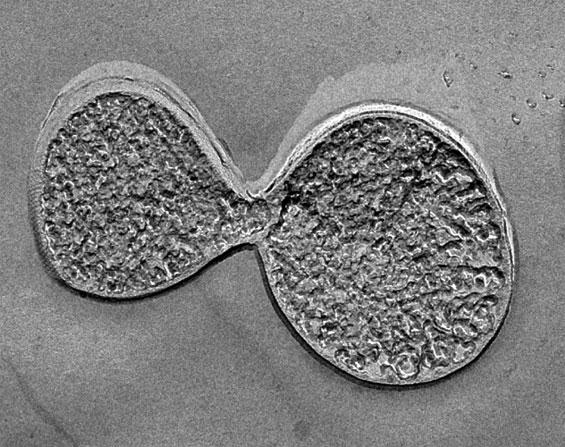
Most are extremely thermophilic 极端嗜热
- hyperthermophiles (hydrothermal vents,热液喷口,海底热泉)
Most are strict anaerobes 严格厌氧
Many are sulfur-dependent
for some, used as electron acceptor in anaerobic respiration
for some, used as electron source
1. Genus Sulfolobus 硫化叶菌属
Irregularly lobed(有叶的;分裂的), spherical(球形的) shaped
- cell walls contain lipoproteins(脂蛋白) and carbohydrates
Thermoacidophiles 嗜热嗜酸菌
70–80°C
pH 2–3
Metabolism
lithotrophic(无机营养的) on sulfur using oxygen (usually) or ferric iron($Fe^{3+}$) as electron acceptor
Phylum Euryarchaeota 广古菌门
Consists of many classes, orders, and families
Often divided informally into five major groups
- methanogens 产甲烷菌
- halobacteria 嗜盐菌
- thermoplasms 热质
- extremely thermophilic $S^{0}$-metabolizers
- sulfate-reducers 硫酸盐还原剂
1. Methanogens

26 genera, largest group of cultured archaea, differ in
morphology 形态学
16S rRNA
cell walls
membrane lipids
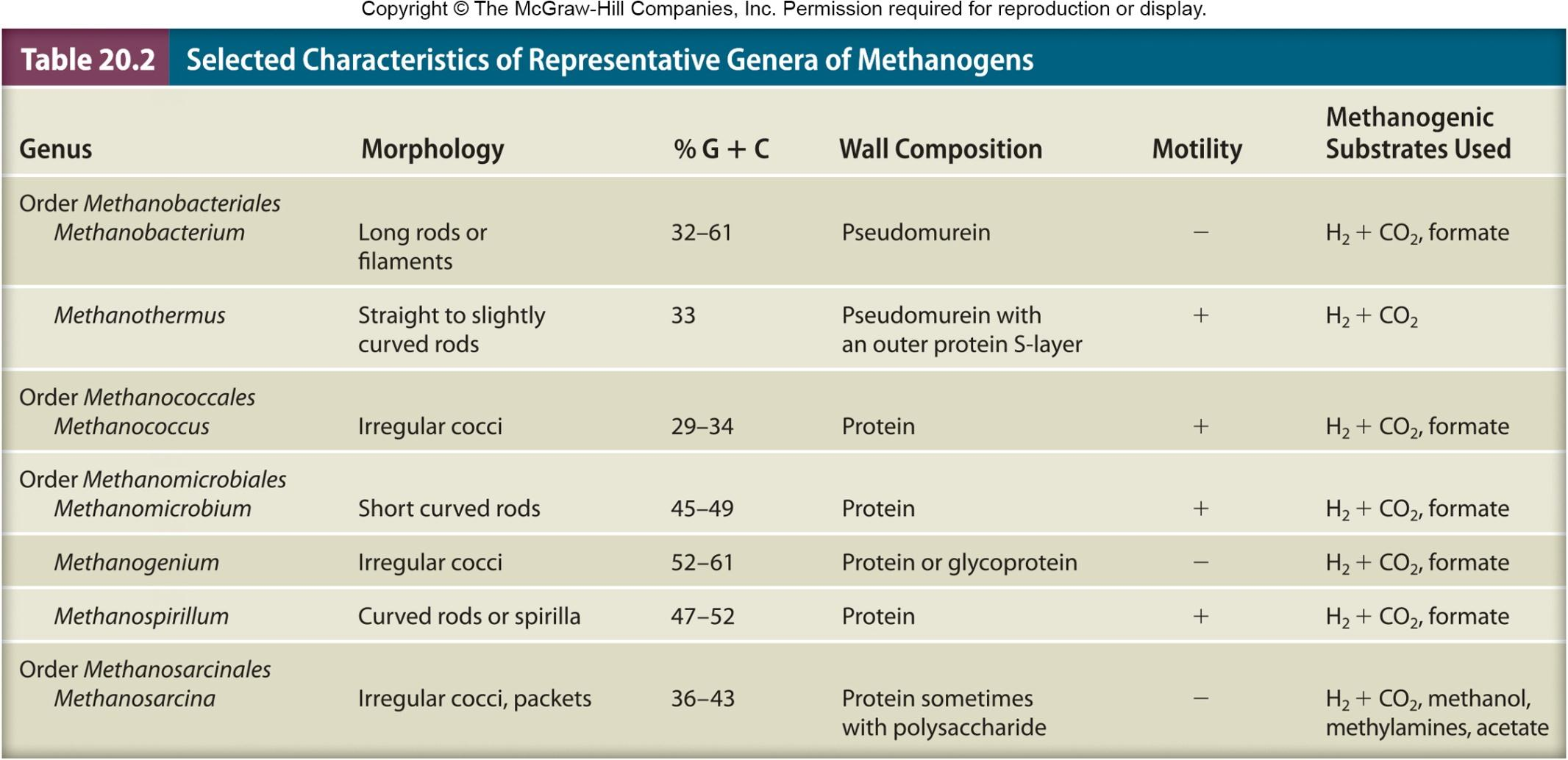
Unique anaerobic production of methane
Unique anaerobic production of methane
- hydrogen, $CO_2$ oxidation
- ATP production linked with methanogenesis 产甲烷作用
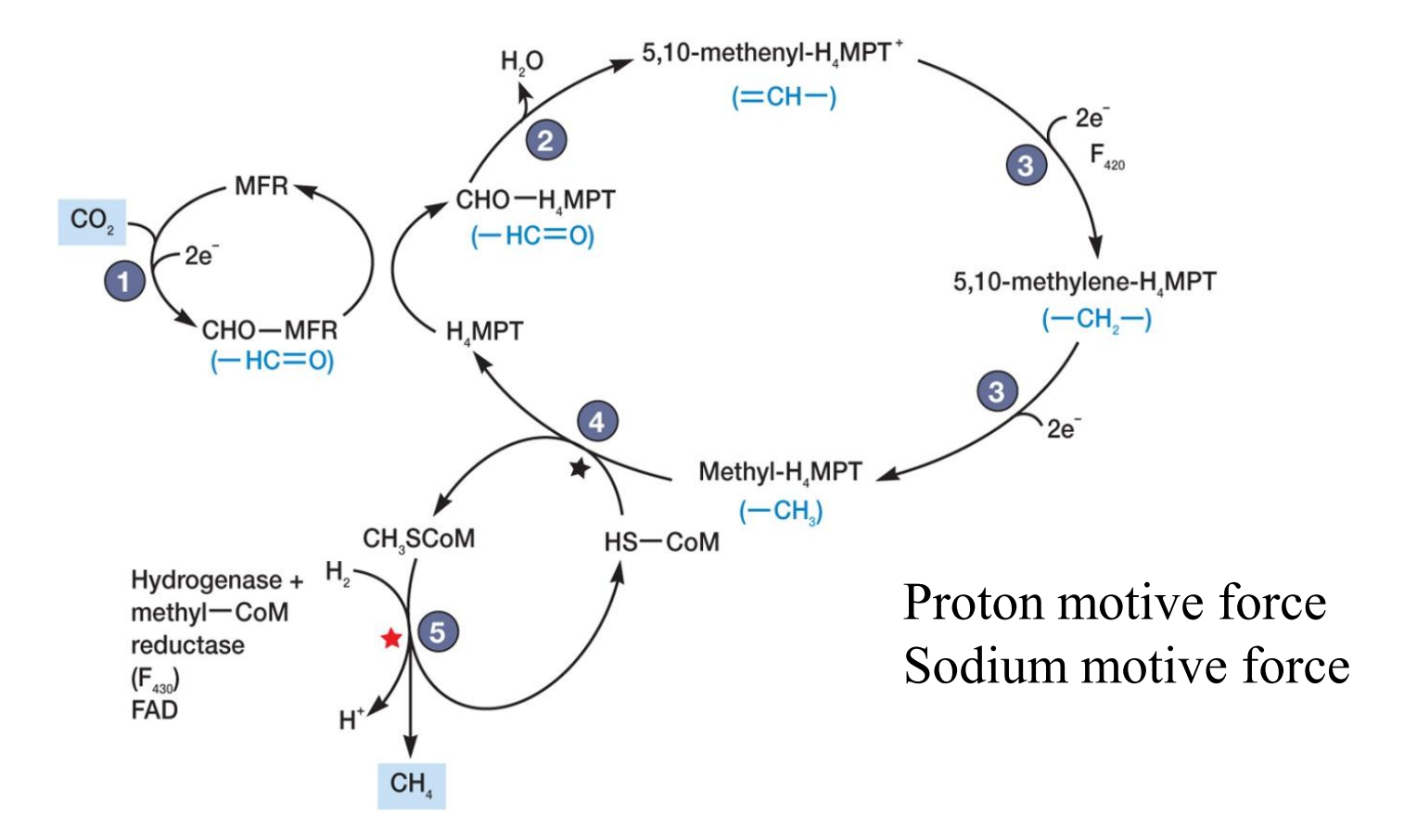
Ecological and Practical Importance of Methanogens
Can produce significant amounts of methane
clean energy source
greenhouse gas and contribute to global warming
Wastewater treatment
Can form symbiotic(共生的) relationships with certain bacteria, assisting carbon/sulfur cycling
Can oxidize iron
- corrosion of iron pipes
四、Nonproteobacterial Gram-Negative Bacteria
Domain Bacteria
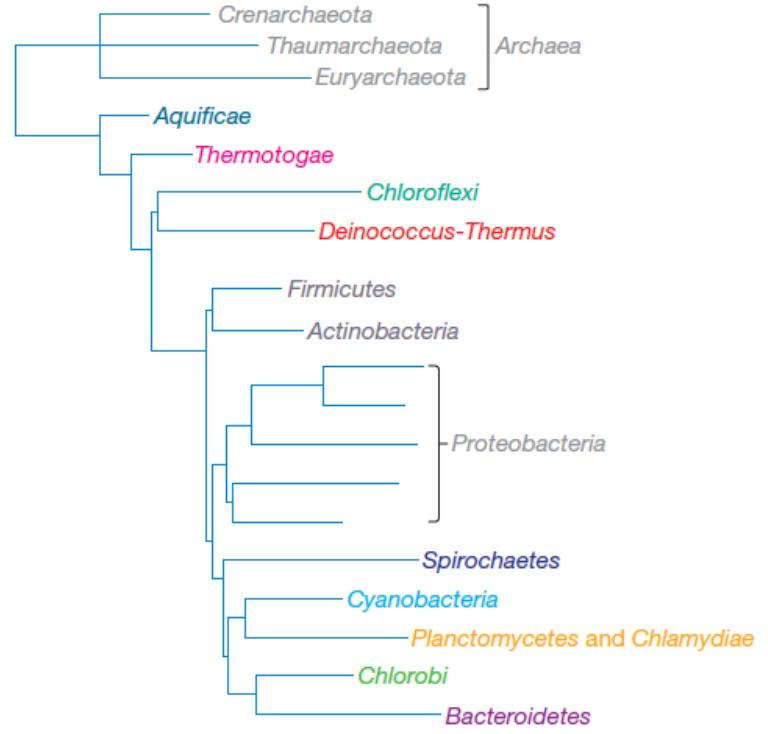
Characteristics include:
morphology
reproduction
physiology 生理学
metabolism
ecology 生态学
Phylum Aquificae 产水菌门
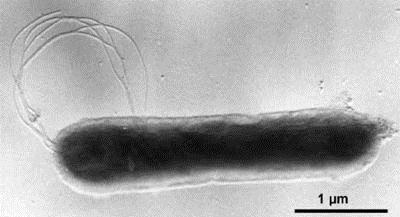
Thought to be deepest (oldest) branch of Bacteria
Contains one class, one order, and five genera
- two best studied genera are Aquifex (产水菌属) and Hydrogenobacter (氢杆菌属)
Bacterial thermophiles
- optimum growth temperatures above 85°C
Phylum Thermotogae 热袍菌门
Second deepest branch of Bacteria
Contains one class, one order, and six genera
- best studied genus is Thermotoga (热袍菌属)
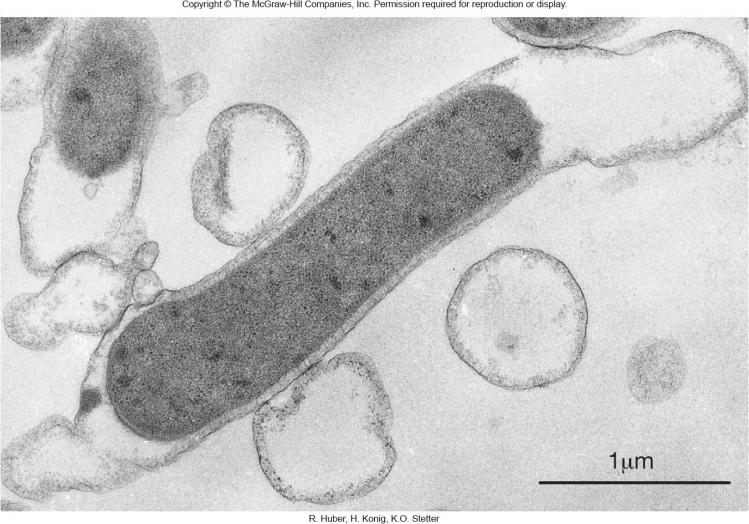
1. Genus Thermotoga 热袍菌属
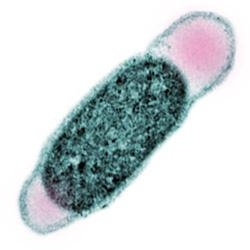
Gram-negative rods
- outer sheathlike (鞘状) envelope balloons from ends of cell
Thermophiles (optimum 80°C; maximum 90°C)
Chemoheterotrophs 化学趋化菌
- 24% of coding sequences similar to archaeal genes
- may be due to horizontal gene transfer (HGT,基因水平转移)
- 24% of coding sequences similar to archaeal genes
基因水平转移(英语:horizontal gene transfer,缩写:HGT)又称水平基因转移或基因侧向转移(lateral gene transfer,缩写:LGT),指生物将遗传物质传递给其他细胞而非其子代的过程,例如:接合、转导及转化与此相对,“基因垂直传递”指生物由其祖先继承遗传物质。
Phylum Deinococcus-Thermus 异常球菌-栖热菌门
Contains one class, two orders, three genera
Spherical or rod-shaped; in pairs or tetrads
Gram-positive (lack typical Gram-positive cell wall)
- layered outer membrane similar to Gram-negatives
- lacks teichoic acid (磷壁酸)

Phylum Tenericutes 软壁菌门 ; Class Mollicutes 柔膜菌纲 (The Mycoplasmas 支原体)
Contains five orders and six families
Lack cell walls and are pleomorphic (不定型的)
cannot synthesize peptidoglycan precursors (肽聚糖前体)
sterols(固醇类) may stabilize plasma membrane
smallest bacteria capable of self-reproduction
grow as fried egg appearance on agar surface
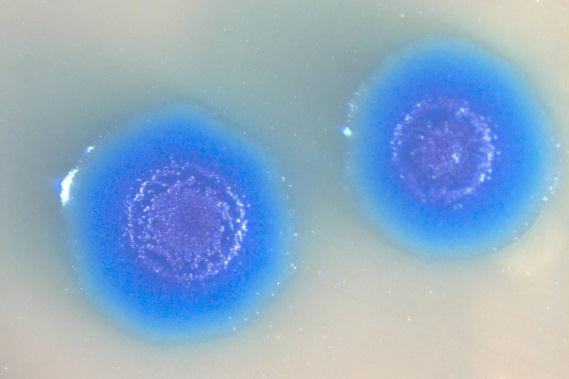
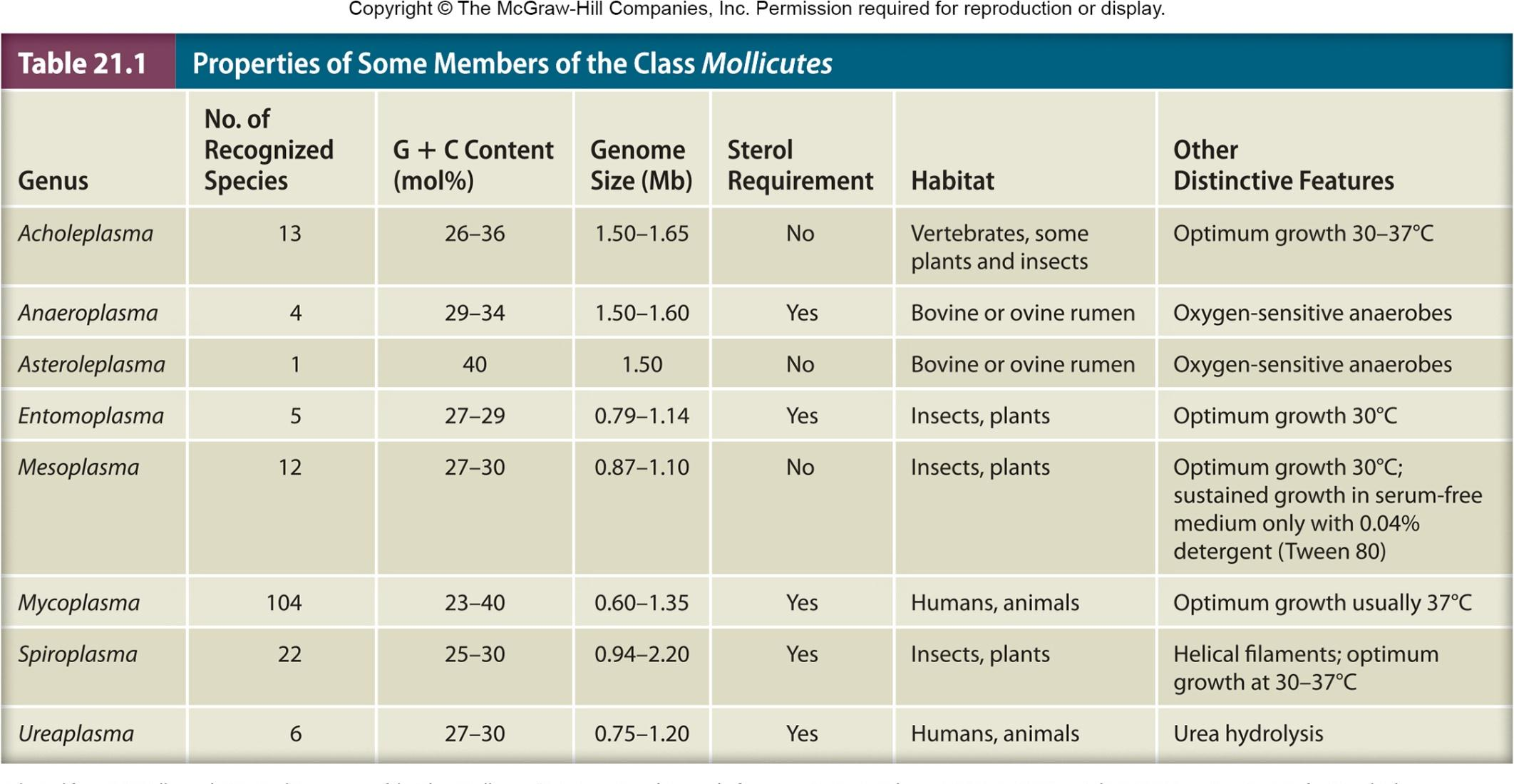
Genomes less than 1000 genes
Important pathogens 病原体
Photosynthetic Bacteria 光合细菌
- Phylum Chlorobi(绿菌门) – green sulfur bacteria
- Phylum Chloroflexi(绿弯菌门) – green nonsulfur bacteria
- Phylum Cyanobacteria (蓝菌门)
- Purple bacteria (proteobacteria(变形菌门))
- Gram-negative thermophilic: Acidobacteria(酸杆菌门) (recently recognized as a phylum in 2012)
- Phylum Firmicutes(厚壁菌门) – heliobacteria(日光杆菌属)

Phylum Chlorobi 绿菌门
Green sulfur Bacteria
morphologically diverse
thrive in sulfide rich areas
have chlorosomes (氯体)
- ellipsoidal vesicles attached to plasma membrane
- contain accessory photosynthetic pigments
- Very efficient light harvesting complexes

Phylum Cyanobacteria 绿弯菌门
Largest, most diverse group of photosynthetic bacteria
- Gram-negative
- Many are obligate photolithoautotrophs(专性光生自养生物); some can grow slowly in dark as chemoheterotrophs(化学趋化菌)
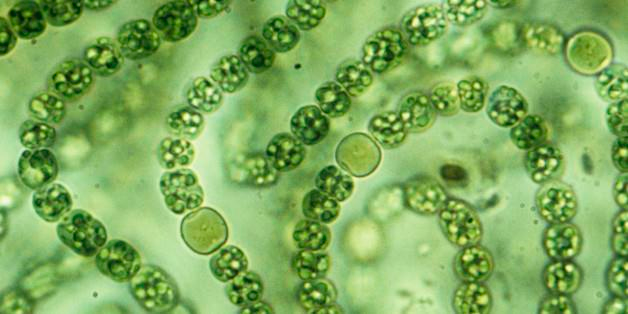
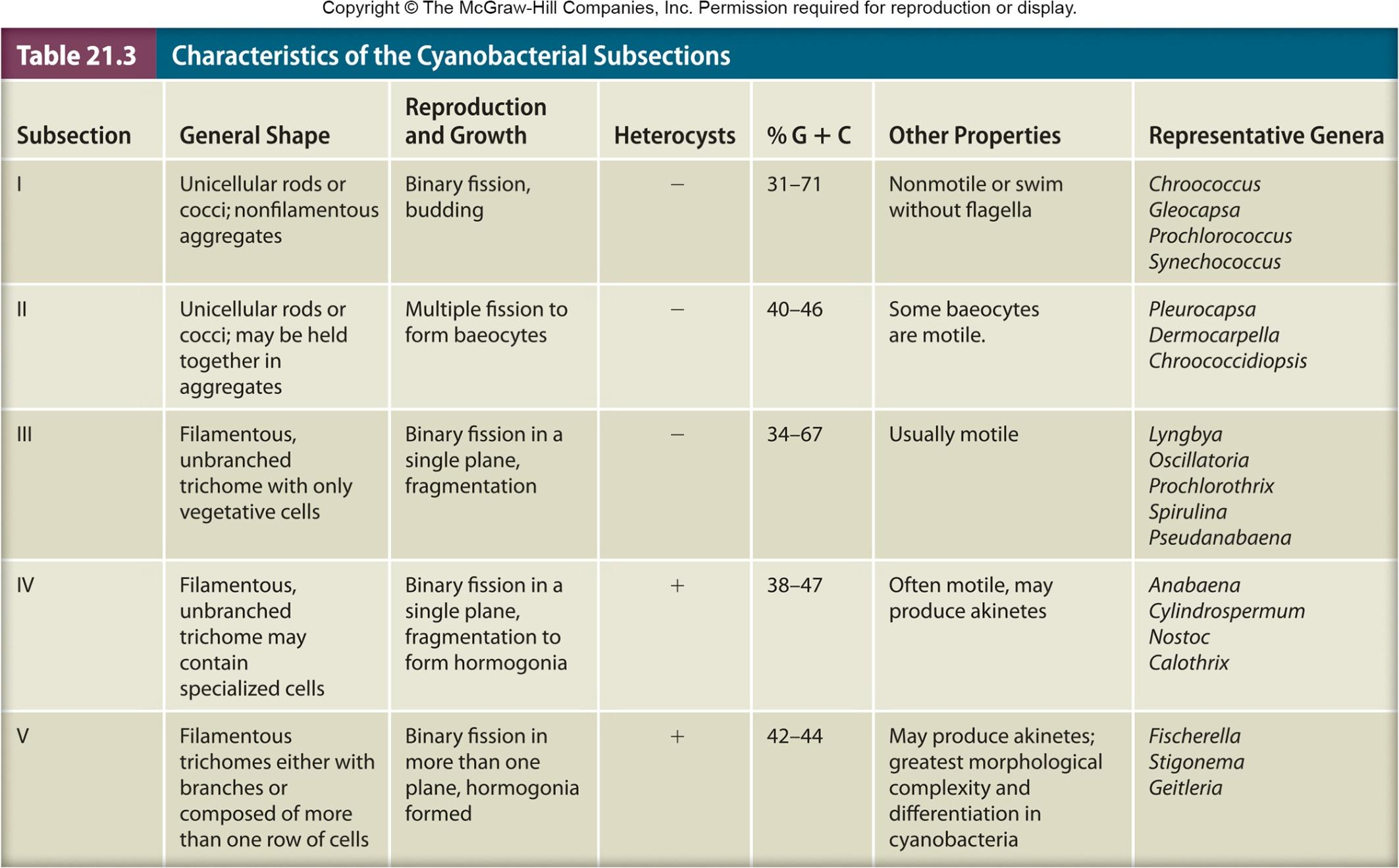
1. Photosynthesis in Cyanobacteria
Resembles that of eukaryotes
have photosystems I and II
have chlorophyll a (叶绿素a)
- prochlorophytes(原绿生物) have chlorophyll a and b
oxygenic(需氧的) photosynthesis
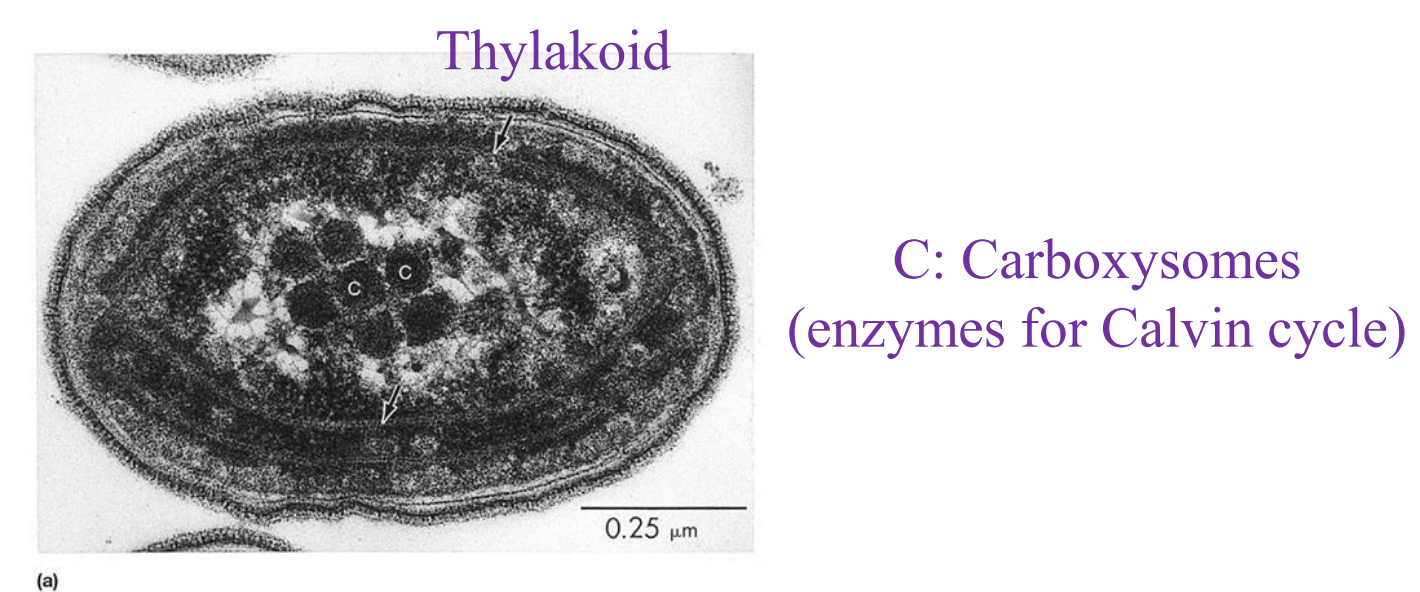
2. Morphology of Cyanobacteria
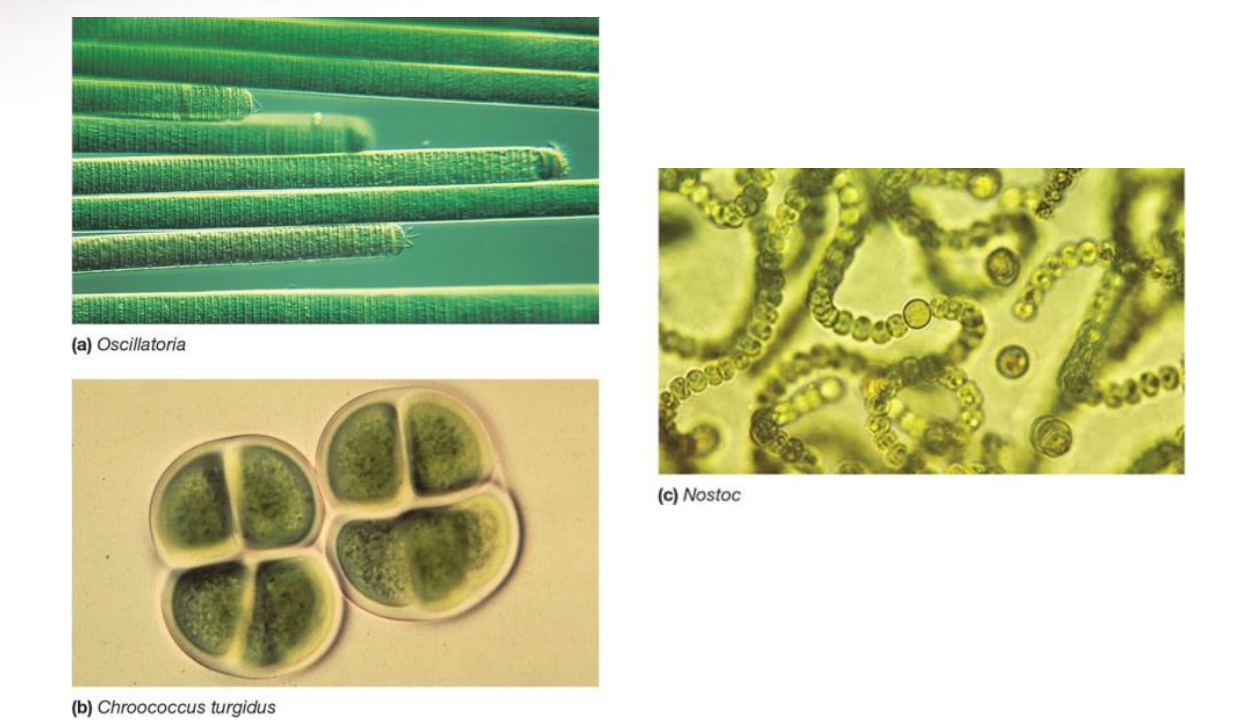
• Range in diameter from ~1 to 10 mm
• May be unicellular, colonial, or filaments called trichomes (a row of cells in close contact)
3. Specialized Reproductive Cells and Structures
Reproductive strategy:
- Binary fission, budding, fragmentation, multiple fission
Hormogonia 藻殖段
small, motile fragments of filamentous cyanobacteria
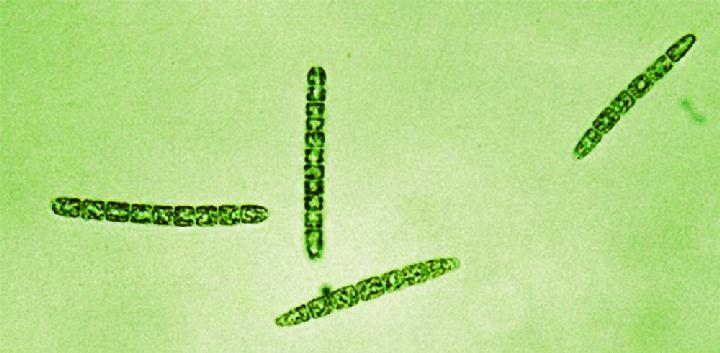
Akinetes 厚壁孢子
dormant, thick-walled resting cells resistant to desiccation(干燥)
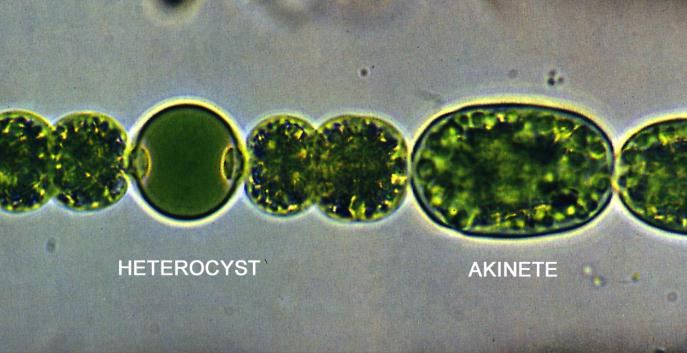
Baeocytes 小繁殖细胞
produced by multiple fission
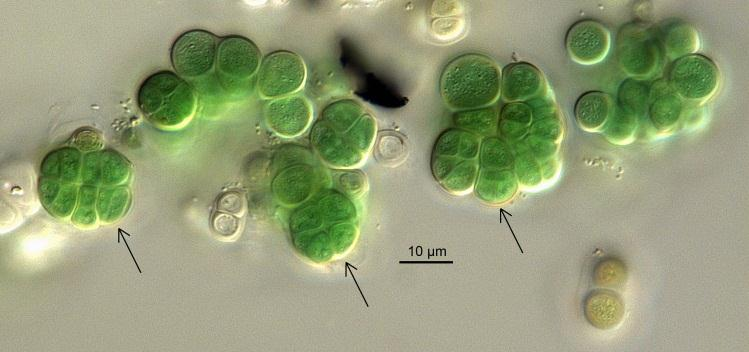
4. Heterocysts 异形胞
Specialized cells used for nitrogen fixation
- produced when organism is nitrogen deprived(被剥夺)
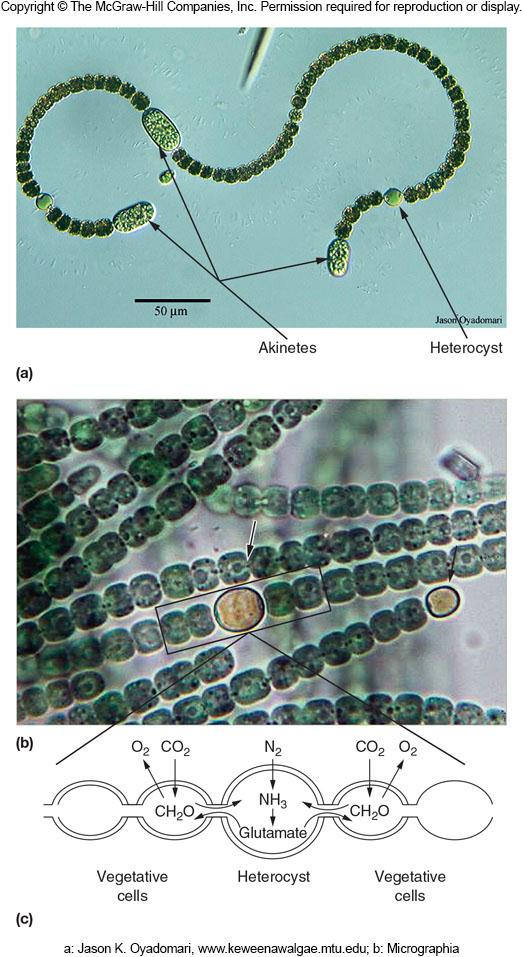
Phylum Chlamydiae 衣原体门
Gram-negative
One class, one order, four families, six genera
- genus Chlamydia is best studied
Obligate intracellular parasites
must grow and reproduce inside host cells
cause disease
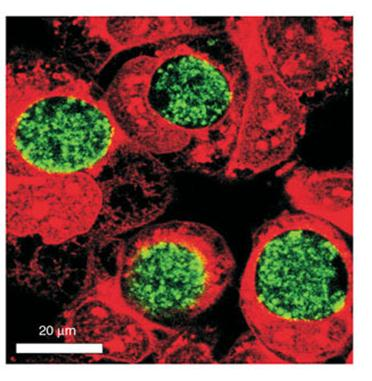

Phylum Spirochaetes 螺旋体门
Contains one class; one order, three families, 13 genera
Gram-negative, chemoheterotrophic(趋化营养) bacteria with distinctive structure and motility
- slender(苗条的;细长的), long with flexible helical shape
Oxygen requirements vary
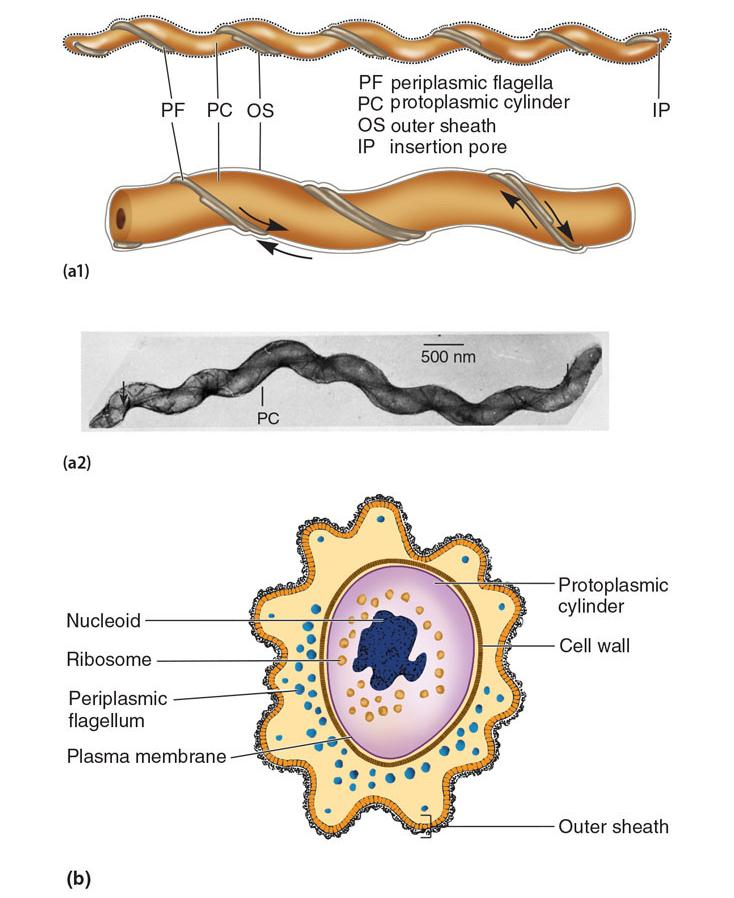
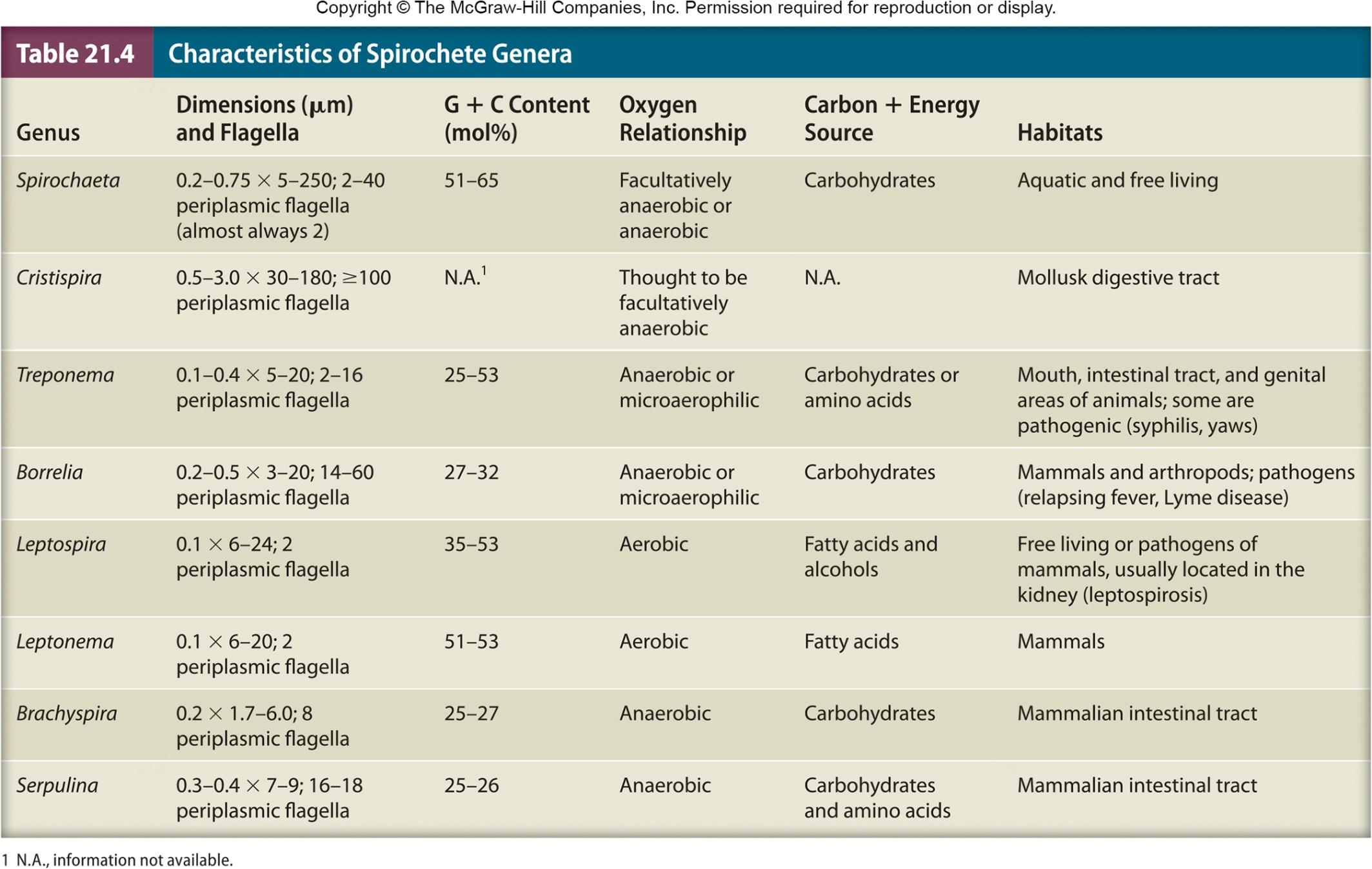
五、Phylum Proteobacteria 变形菌门
The largest phylogenetically coherent bacterial group with more than 500 genera
Remarkable diverse morphologically, physiologically, and other ways
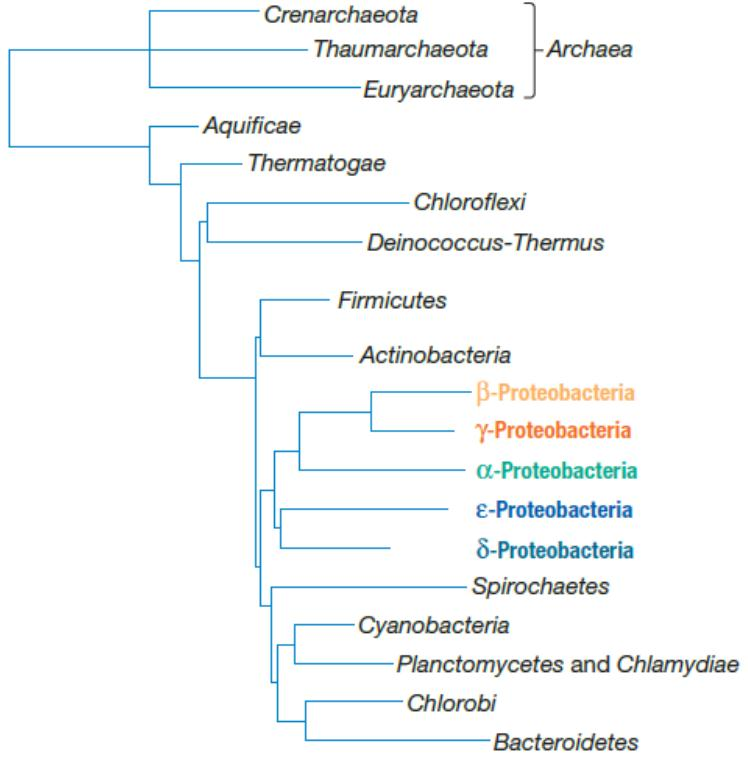
Proteobacteria may have arose from a single photosynthetic ancestor
16S rRNA shows five distinct lineages(血统;家系)
Class Alphaproteobacteria 甲型变形菌纲,α-变形菌纲
Seven orders, 20 families
Most of the oligotrophic (poor nutrients,寡营养的) bacteria
Most abundant bacteria in oceans
Evolved to live within plants and animals resulting in genome reduction or expansion
Metabolically diverse
- methylotrophy, chemolithotrophs, nitrogen fixers
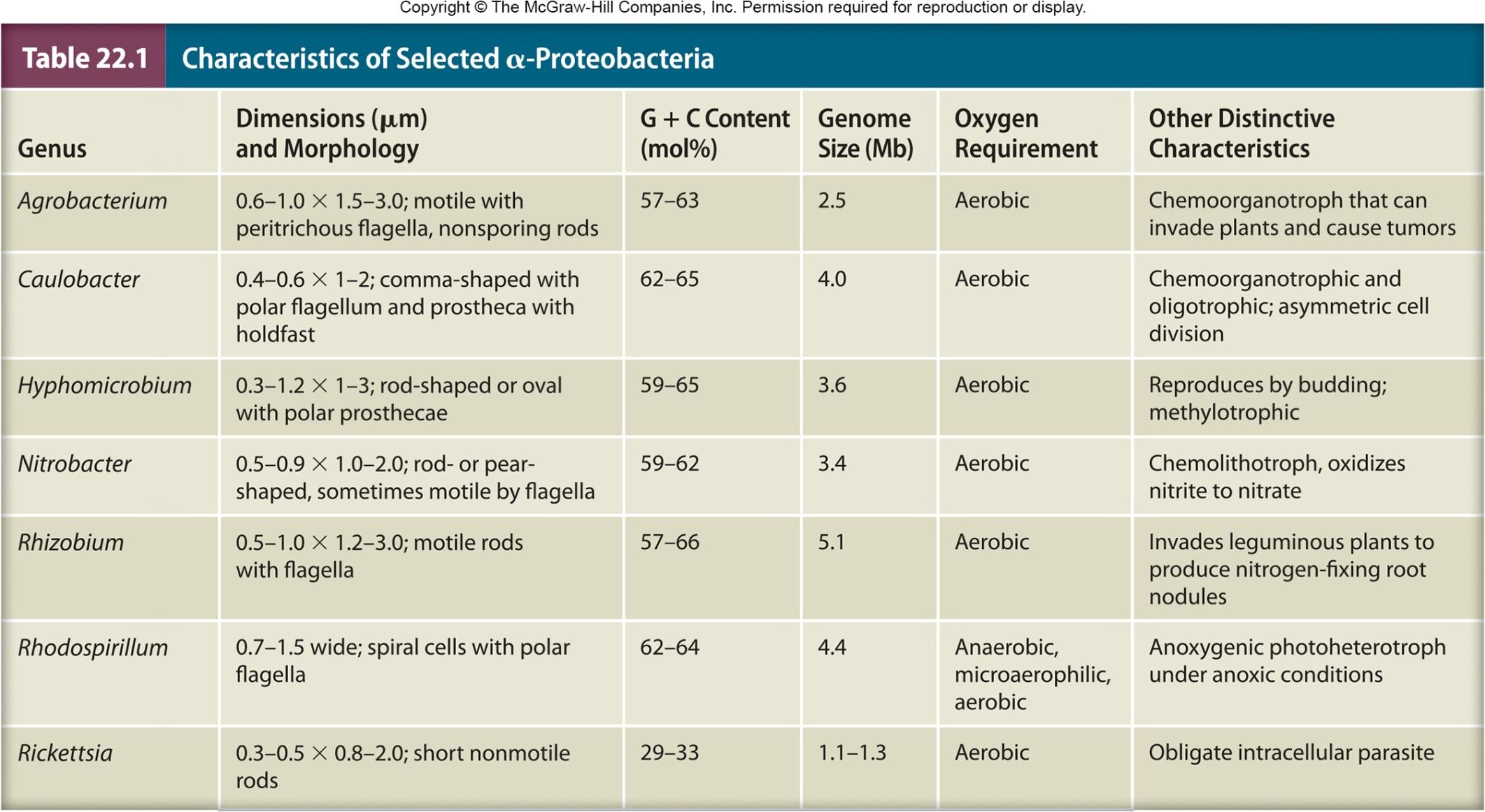
1. Genus Rickettsia 立克次氏体属
Very small, Gram-negative, non-flagellated, diverse morphology
All species are parasitic(寄生的) or mutualistic (互惠的)
live in blood sucking arthropods(节肢动物) or primary hosts
grows in vertebrate erythrocytes(脊椎动物的红细胞), macrophages(巨噬细胞), vascular endothelial cells(血管内皮细胞)
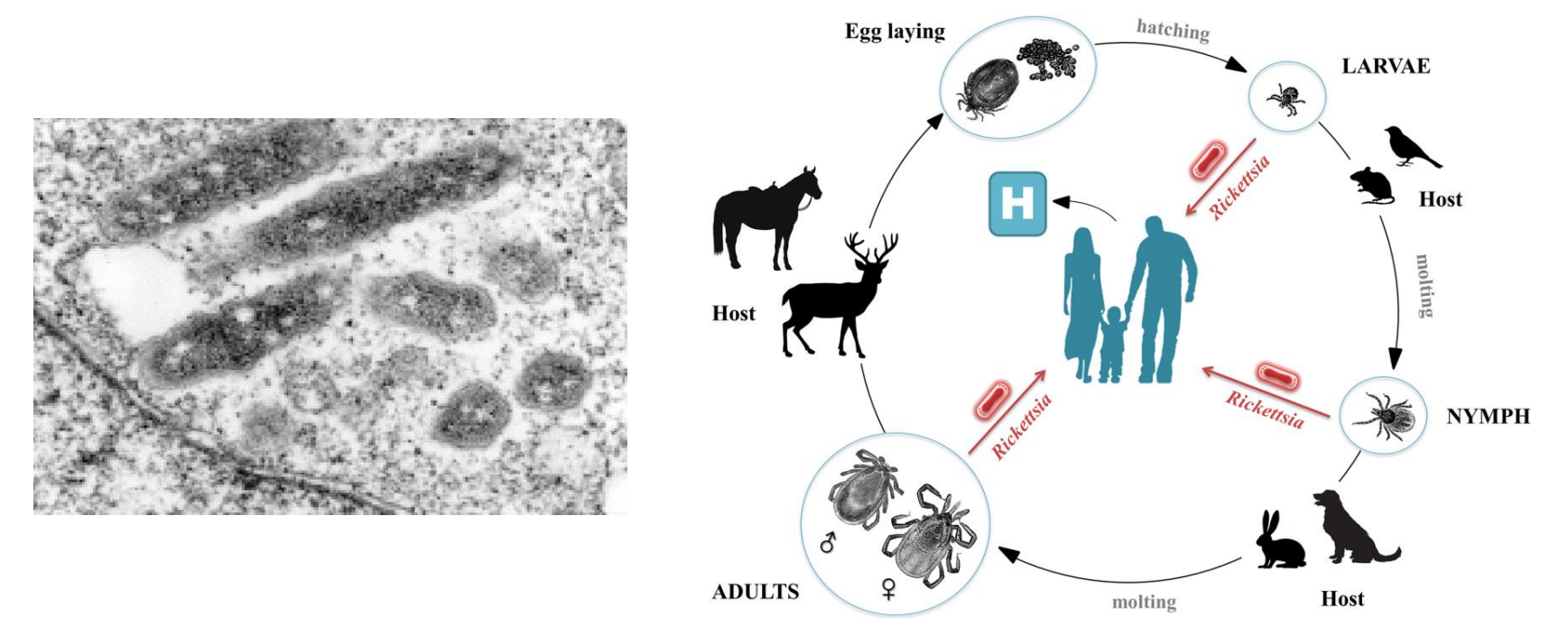
Rickettsia Metabolism
Lack glycolytic pathway
- do not use glucose as energy source
Oxidize glutamate and TCA cycle
- intermediates (e.g., succinate)
Take up and use ATP and other materials from host cell
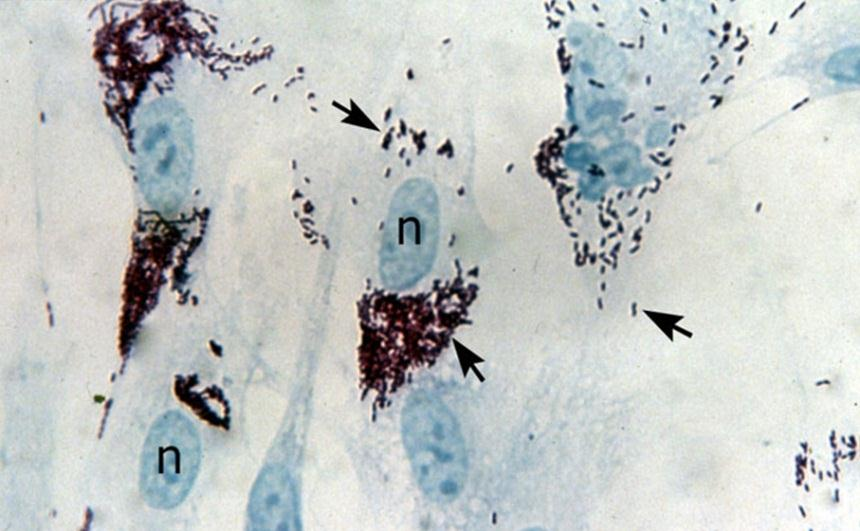
Class Betaproteobacteria β-变形菌纲
Seven orders, 12 families
Considerable metabolic diversity
generally use decomposed(已分解的,已腐烂的) organic matter anoxically(缺氧地,total depletion in the level of oxygen)
some use hydrogen, methane, ammonia, volatile fatty acids(挥发性脂肪酸)
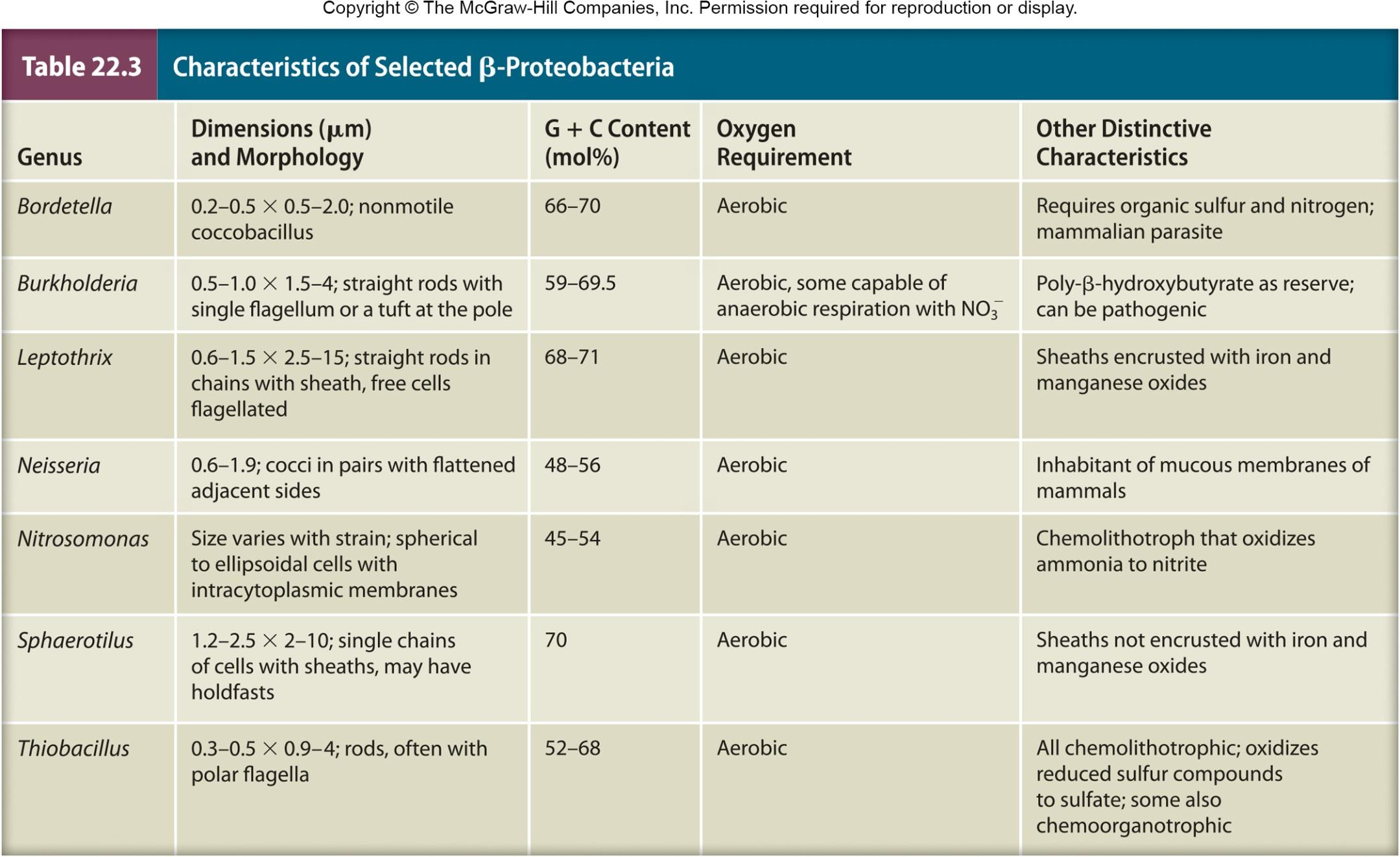
Class Gammaproteobacteria 丙型变形菌纲;γ-变形菌纲
Largest subgroup of proteobacteria
- contains 14 orders and 28 families
Very diverse physiological types
chemoorganotrophs, chemolithotrophs, photolithotrophs, methylotrophs
aerobic and anaerobic
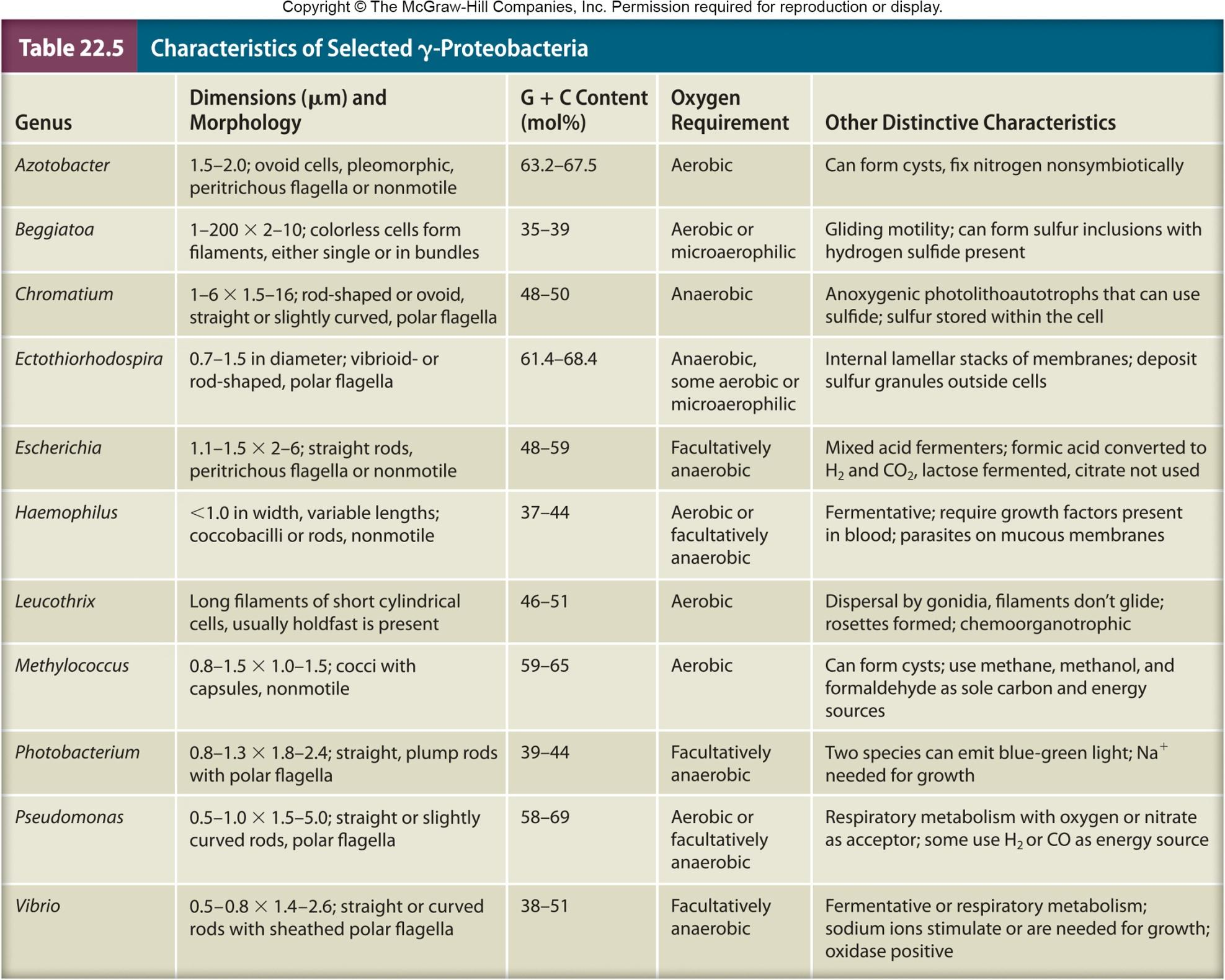
1. Order Pseudomonadales 假单胞菌目
Contains family Pseudomonadaceae
- Pseudomonas is the most important genus in the order Pseudomonadales
- Gram-negative straight or slightly curved rods
- 0.5 to 1.0 μm by 1.5 to 5.0 μm in length
- motile by one or several polar flagella

Practical Importance of Pseudomonads
- Degrade wide variety of organic molecules
- Important experimental subjects
- Some are major animal and plant pathogens
- Some cause spoilage of refrigerated food
- can grow at 4°C
2. Order Vibrionales 弧菌目
Contains one family, Vibrionaceae; eight genera
Most are aquatic(水生的), most free-living
- straight or curved rods, oxidase positive, flagellated
- some symbiotic in luminous organs of fish
- some important pathogens
- Vibrio Cholerae
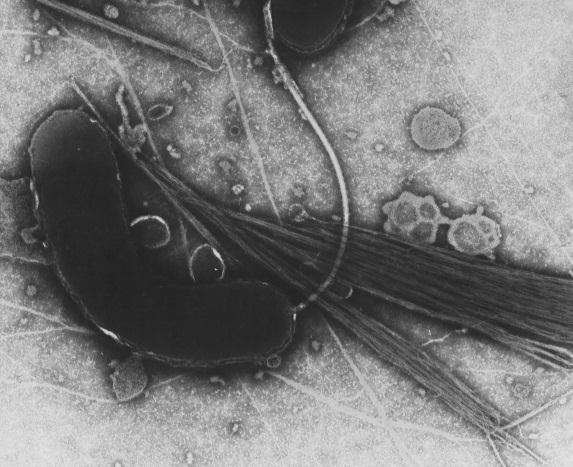
3. Order Enterobacteriales 肠杆菌目
One family, 44 genera
- enteric(肠的) bacteria or enterobacteria
Facultative anaerobes 兼性厌氧
Chemoorganotrophs degrade sugars by glycolytic pathway
- cleave pyruvate to yield formic acid(甲酸)
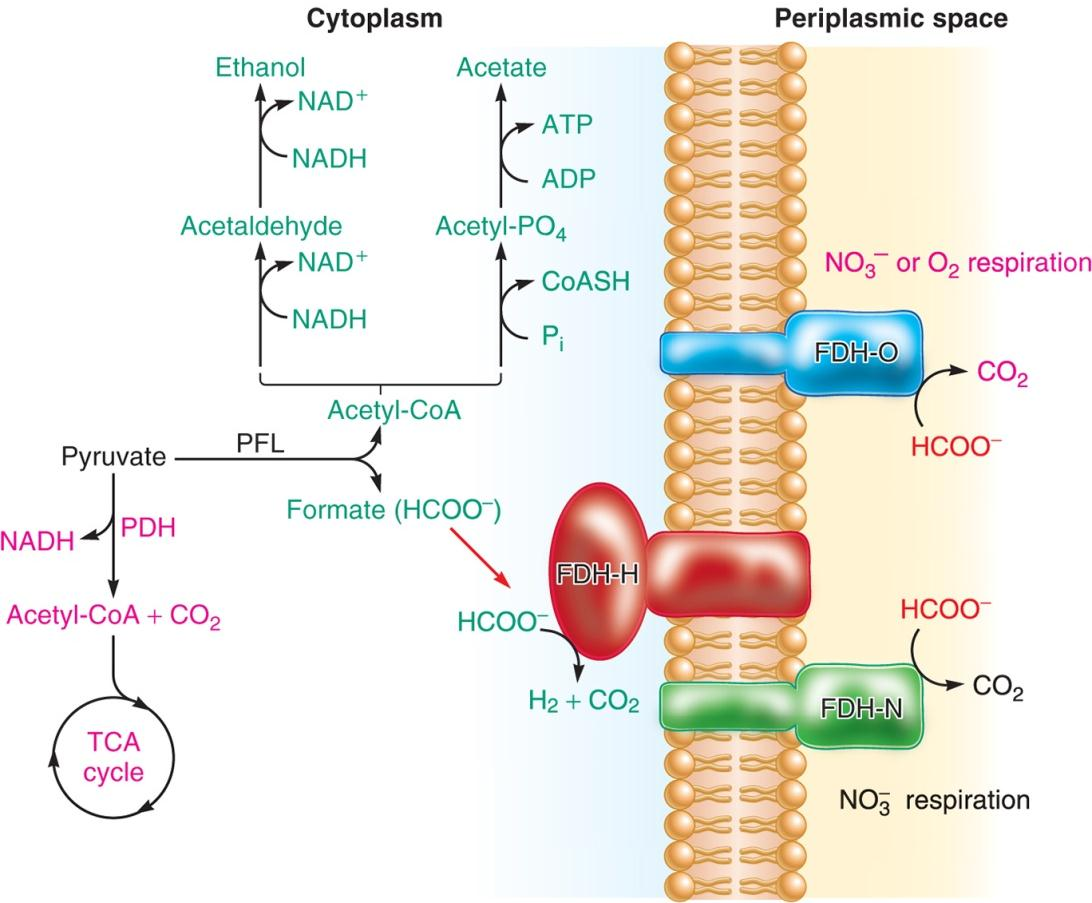
Indentifications
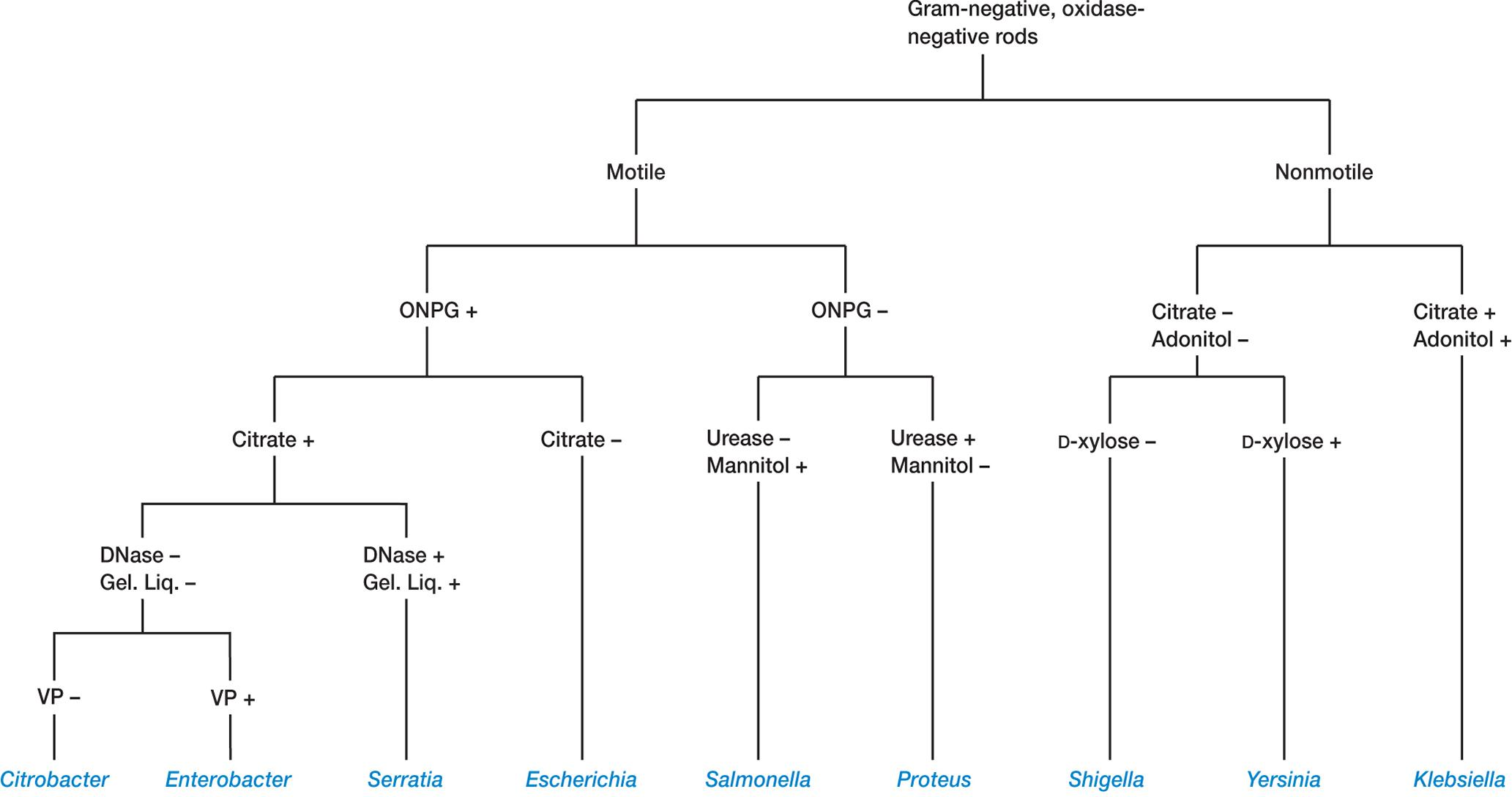
Escherichia coli 大肠杆菌
Probably best studied bacterium
Inhabitant of intestinal tracts of many animals
Used as indicator organisms for testing water for fecal contamination
Some strains are pathogenic
gastroenteritis 肠胃炎
urinary tract infections 尿道感染
Important Pathogenic Enteric Bacteria
- Salmonella (沙门氏菌属)– typhoid fever and gastroenteritis 伤寒和肠胃炎
- Shigella (志贺氏菌属)– bacillary dysentery 菌痢,[内科] 杆菌痢疾
- Klebsiella(克雷伯(氏)杆菌属) – pneumonia 肺炎
- Yersinia (耶尔辛氏菌属)– plague 瘟疫
Class Deltaproteobacteria δ-变形菌纲
Contains eight orders and 20 families
divided into two general groups
aerobic,
- chemoorganotrophic predators
anaerobic
- chemoorganotrophic sulfur- and sulfate-reducers
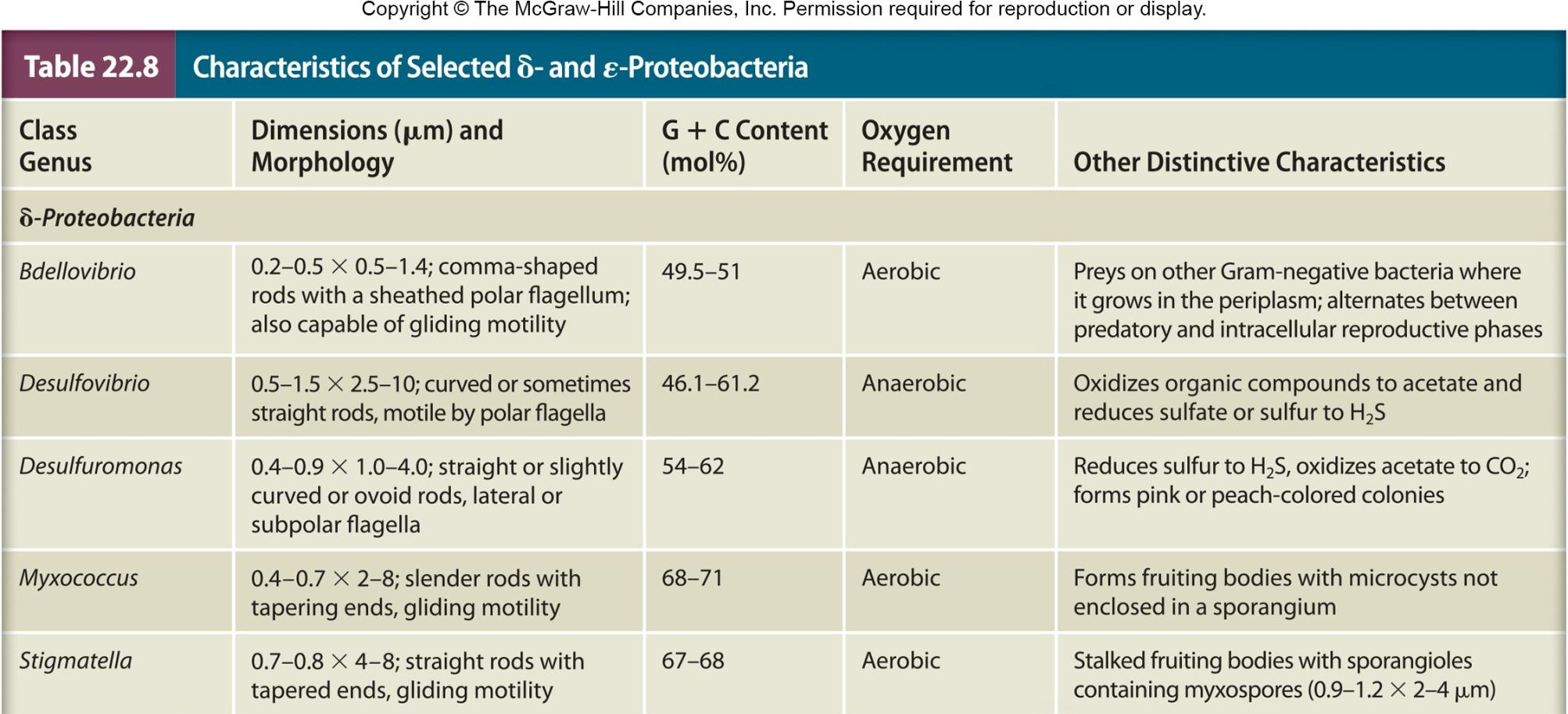
Class Epsilonproteobacteria ε-变形菌纲
Smallest of proteobacterial classes
Two orders, Campylobacteriales and Nautiliales; three families
Slender Gram-negative rods
1. Genus Helicobacter 螺杆菌属
At least 23 species isolated from stomachs and upper intestines of mammals
• e.g., Helicobacter pylori
– causes gastritis and peptic ulcer disease
– does not grow below pH 4.5
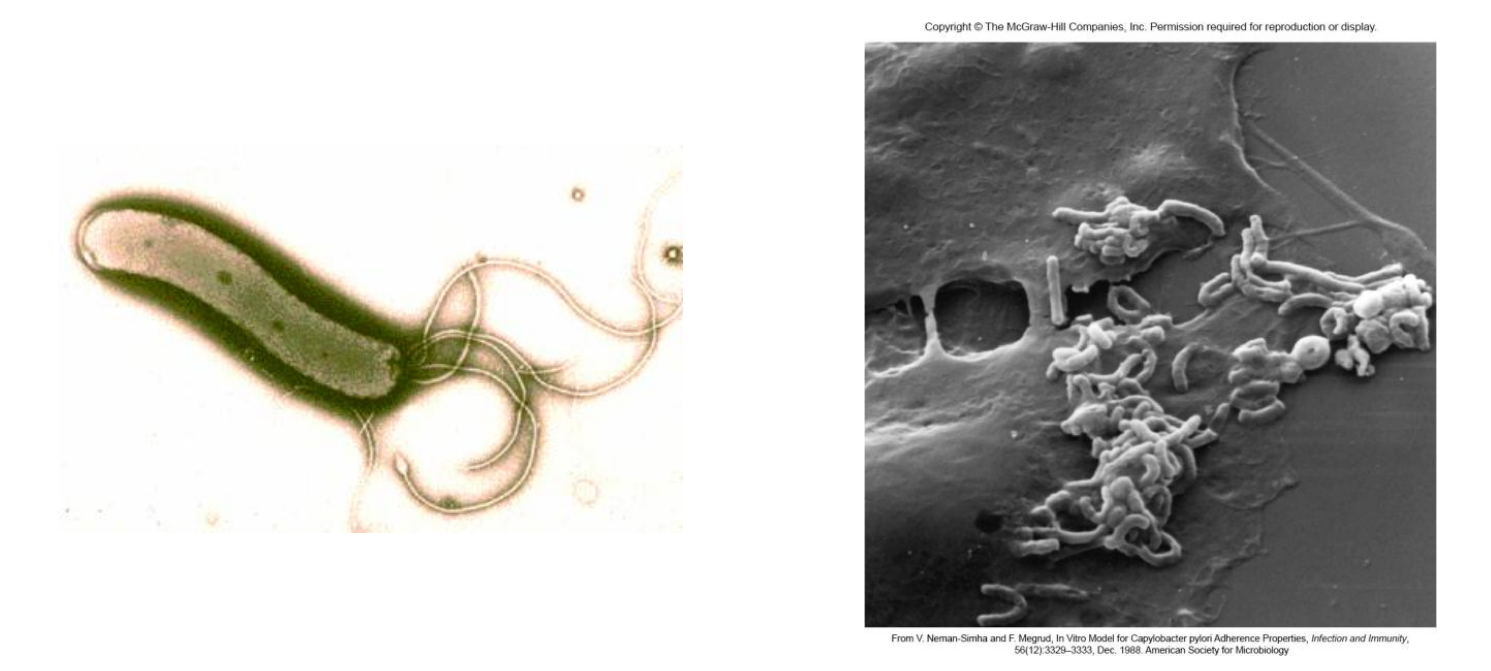
六、Firmicutes 厚壁菌门 (The Low G + C Gram-Positive Bacteria)
Gram-Positive Bacteria
Grouped based on shape (rods, cocci, or irregular) and ability to form endospores
Bergey’s Manual of Systematic Bacteriology, 2nd edition used phylogenetic (系统发生的,动植物种类史的) relationships
Low G + C (Volume 3)
High G + C (Volume 5)
1. Low G + C Gram-Positive Bacteria
Placed in phylum Firmicutes
5 orders, 39 families
– divided into 2 classes
Clostridia 梭菌
Bacilli 杆菌
Class Clostridia 梭菌
Has 3 orders, 11 families
- Largest genus is Clostridium 梭菌属
- obligately anaerobic, fermentative, Gram-positive, endospore forming
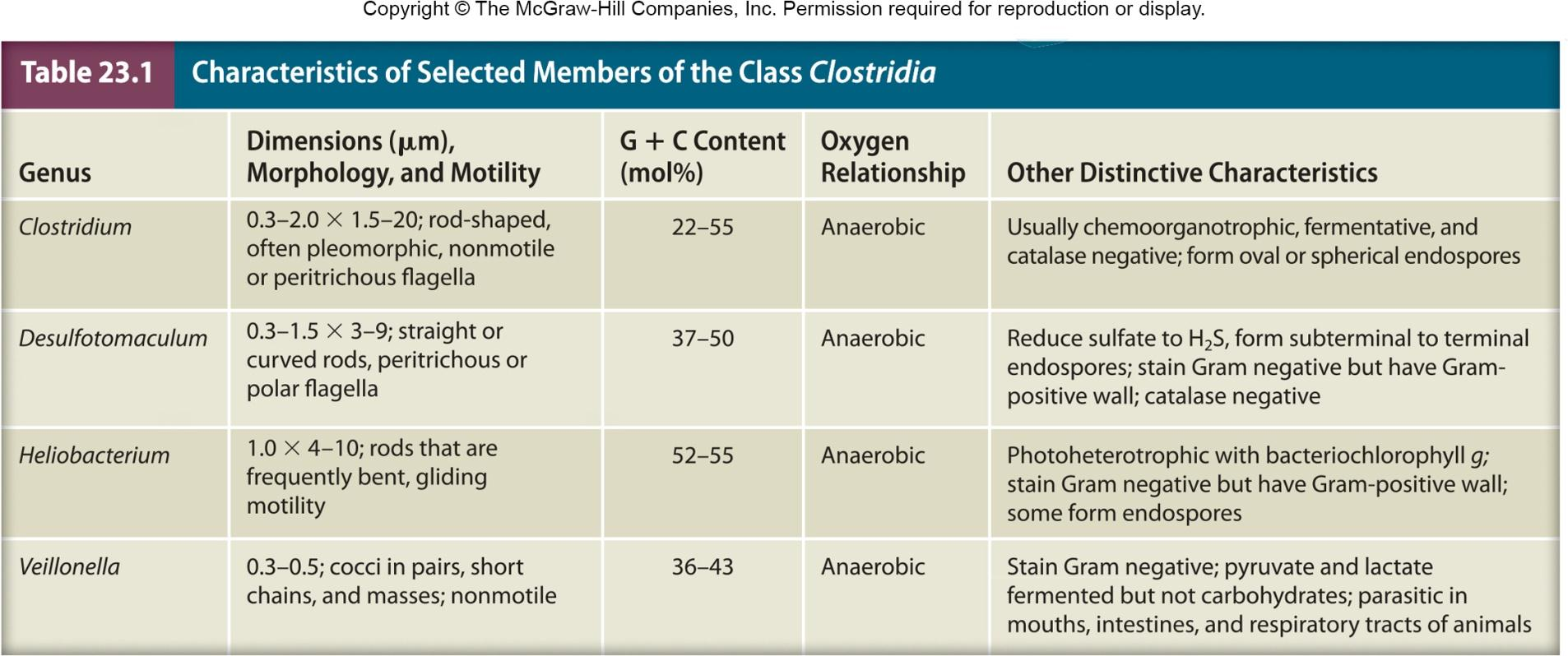
1. Clostridium 梭菌属
obligately anaerobic, fermentative, Gram-positive, endospore forming
Over 100 species
Fermentative metabolism 发酵代谢
ferment amino acids using Stickland reaction
Stickland reaction: oxidation of one amino acid using another as electron acceptor
- food spoilage
- industrial production of butanol (丁醇,同分异构酒精)
- toxin production (C. tetani – tetanus (破伤风;强直))
Class Bacilli 杆菌
Large variety of Gram-positive organisms
Contains two orders, Bacillales 芽孢杆菌 and Lactobacillales 乳杆菌, 17 families and over 70 genera
- includes cocci, rods, and nonspore forming rods
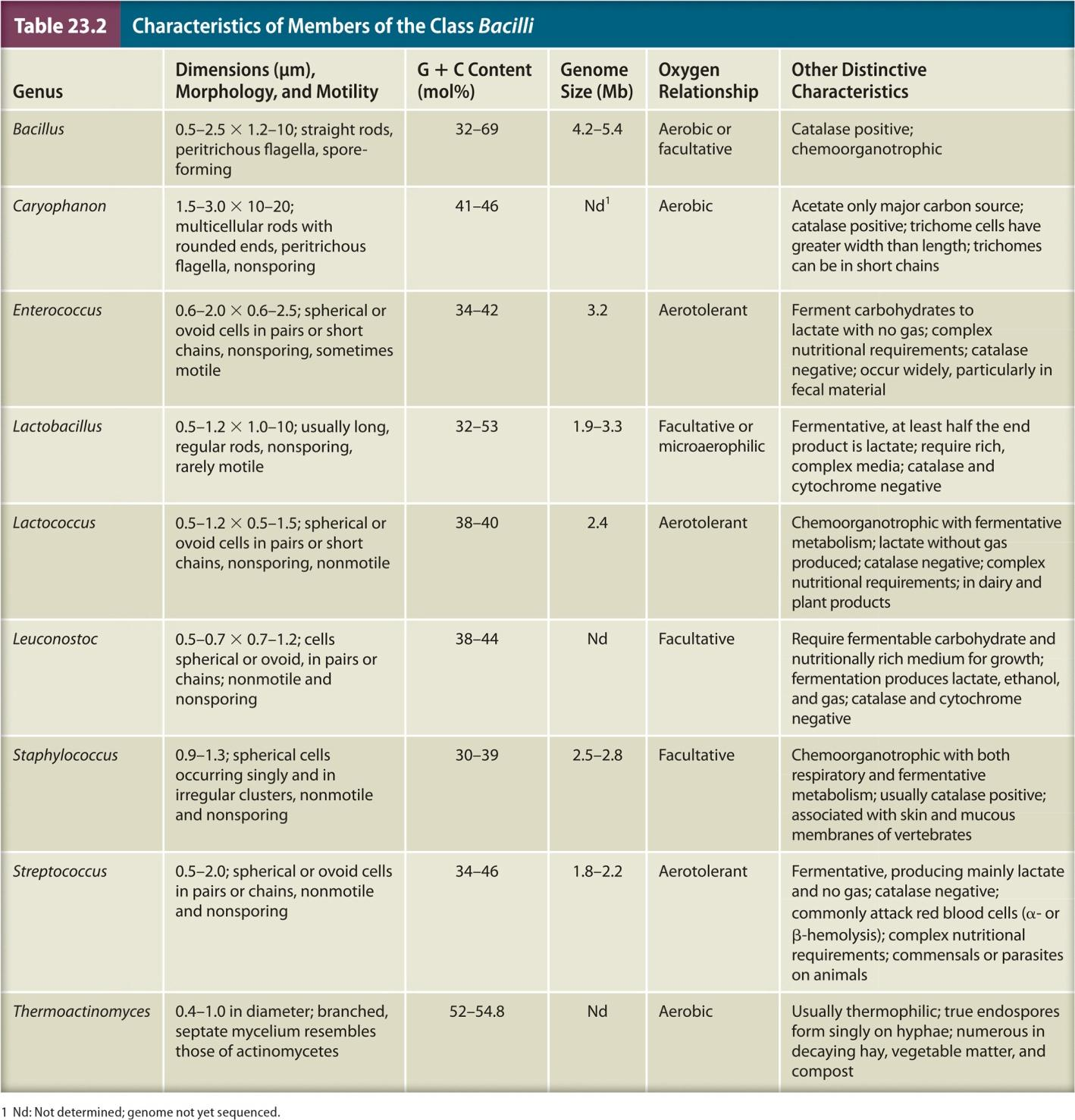
1. Genus Bacillus 芽孢杆菌
Motile, peritrichous flagella, usually aerobic, catalase positive
Various species produce antibiotics (抗生素)
Bacillus subtilis (枯草芽孢杆菌) is type species
- soil-dwelling, spore forming
- may develop biofilms
- model organism
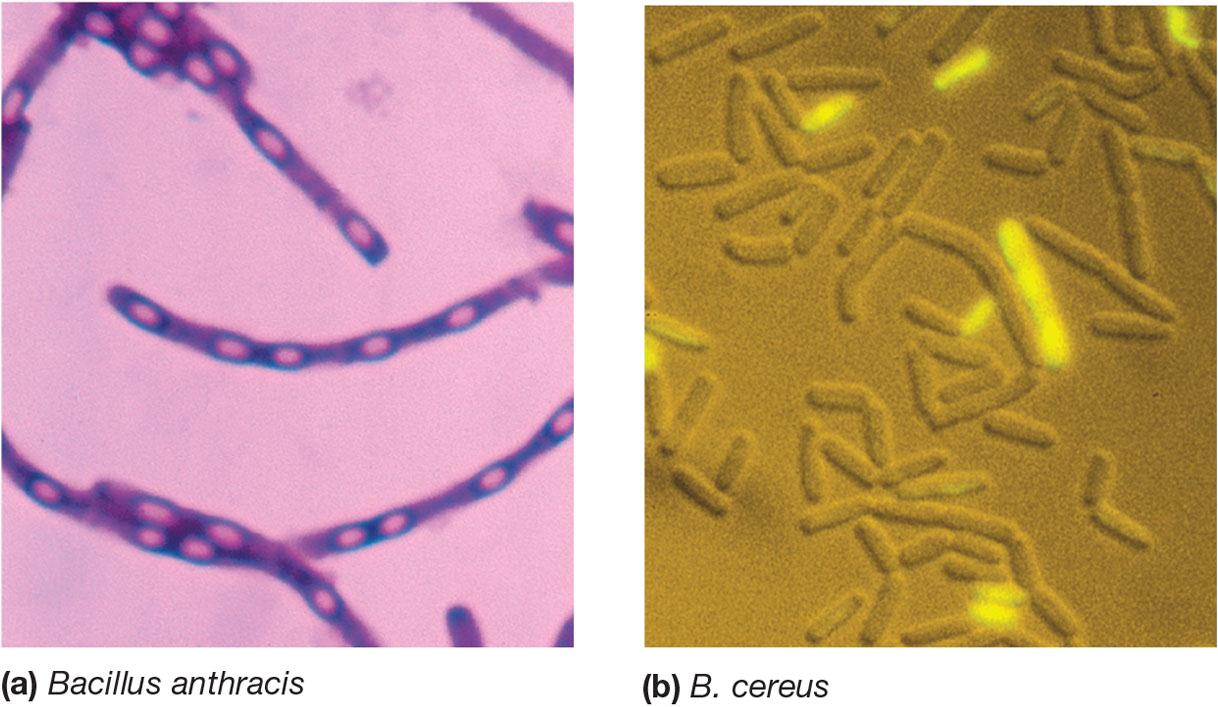
2. Family Staphylococcaceae 葡萄球菌科
Facultatively anaerobic, nonmotile, Gram-positive cocci
Usually form irregular clusters
Normally associated with warm-blooded animals in skin, skin glands, and mucous membranes
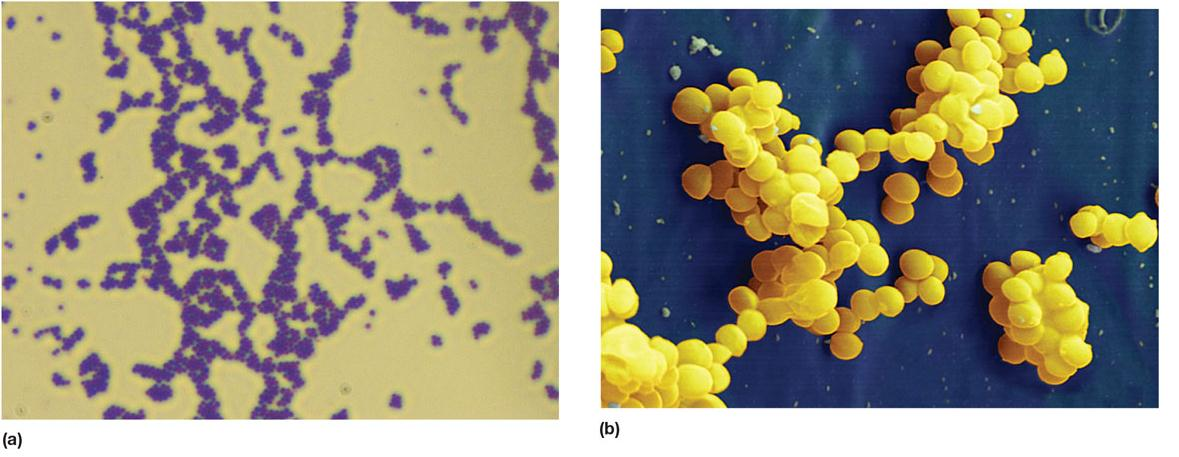
Staphlococcus aureus 金黄色葡萄球菌
Most important human staphloccoccal pathogen
abscesses (脓肿;脓疮), wound infections , pneumonia (肺炎), toxic shock syndrome (中毒性休克综合症)
major cause of common food poisoning
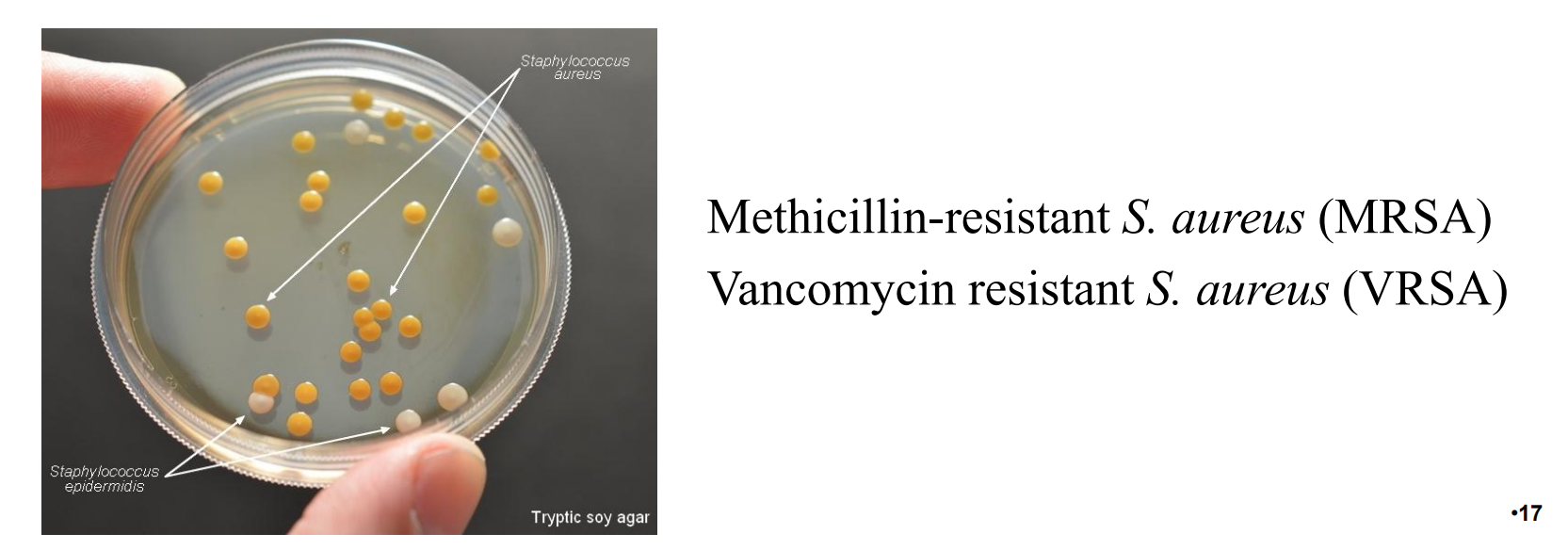
3. Order Lactobacillales 乳杆菌
Also called lactic acid bacteria (LAB)
Morphologically diverse
nonsporing
usually nonmotile
Ferment sugars for energy
lack cytochromes
fastidious
A fastidious organism is any organism that has a complex nutritional requirement. In other words, a fastidious organism will only grow when specific nutrients are included in its diet.
The more restrictive term fastidious microorganism is often used in the field of microbiology to describe microorganisms that will grow only if special nutrients are present in their culture medium.

Largest genus - Lactobacillus 乳杆菌属
sometimes coccobacilli
grow in slightly acidic conditions (pH 4.5 to 6.4)
two fermentation pathways
homolactic (同构) fermentation (glycolytic(糖分解的) pathway)
heterolactic (异构) fermentation (phosphoketolase(磷酸酮(醇)酶) pathway)
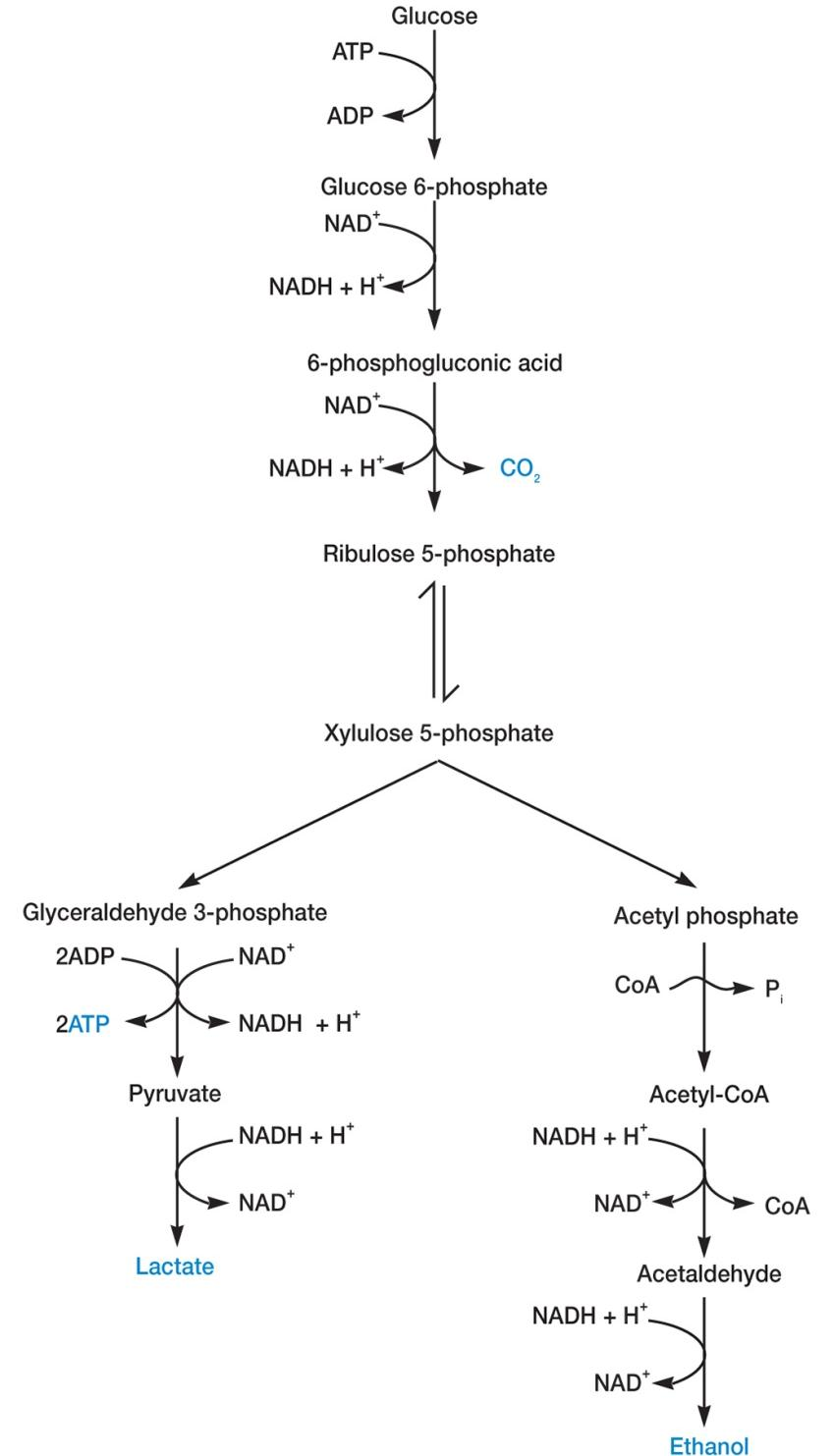
4. Families Streptococcaceae and Enterococcaceae 链球菌科和肠球菌科
Chemoheterotrophic(化学营养), mesophilic(嗜温的), nonsporing cocci, usually nonmotile
Fermentative only
Aerotolerant and anaerobic
Groups
enterococci 肠球菌
lactococci 乳球菌
streptococci 链球菌
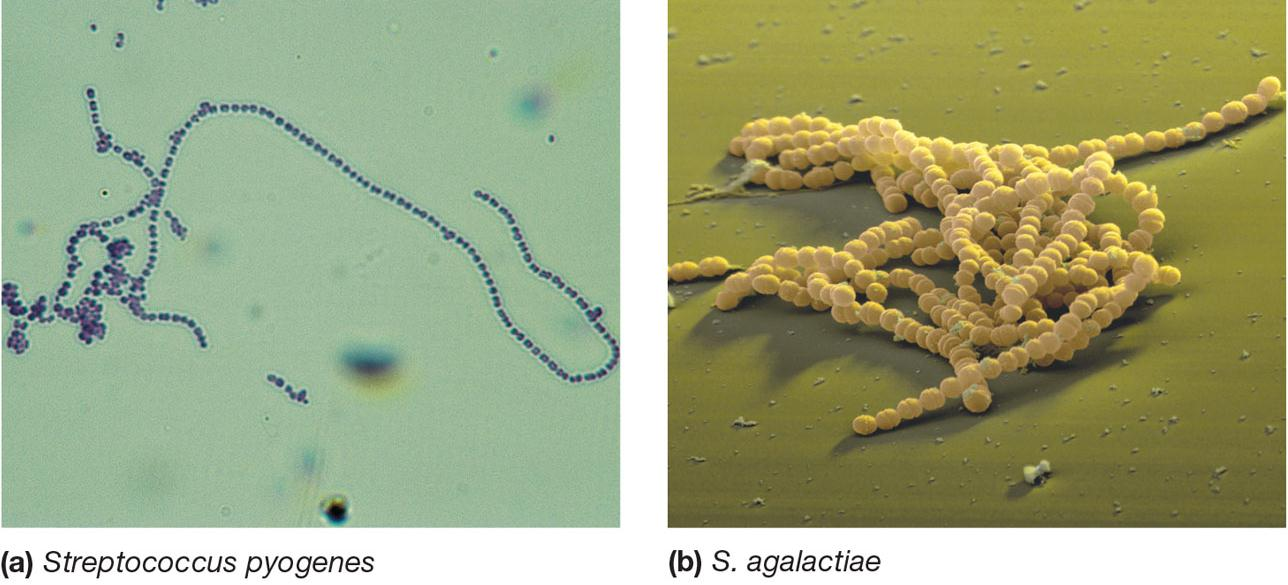
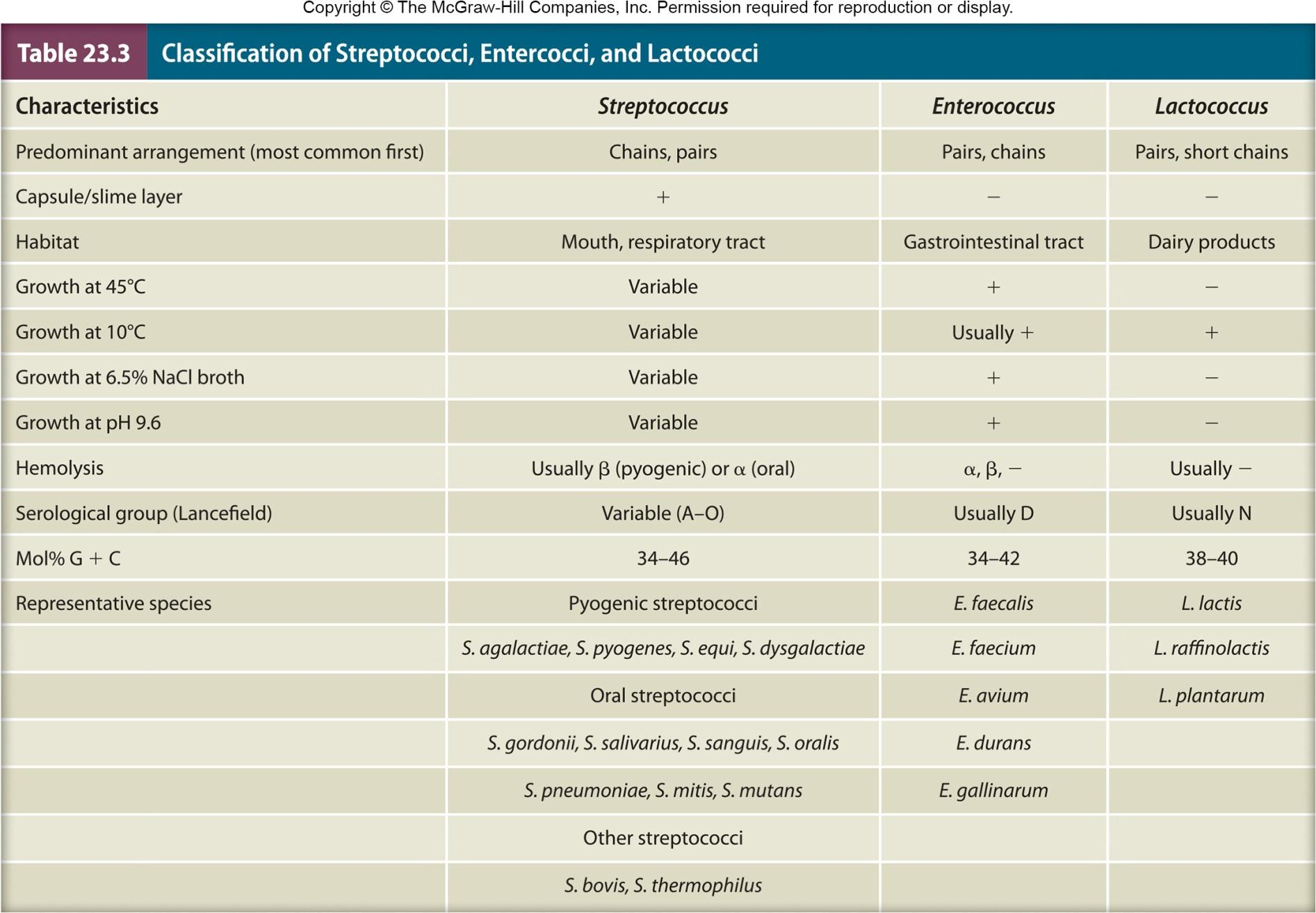
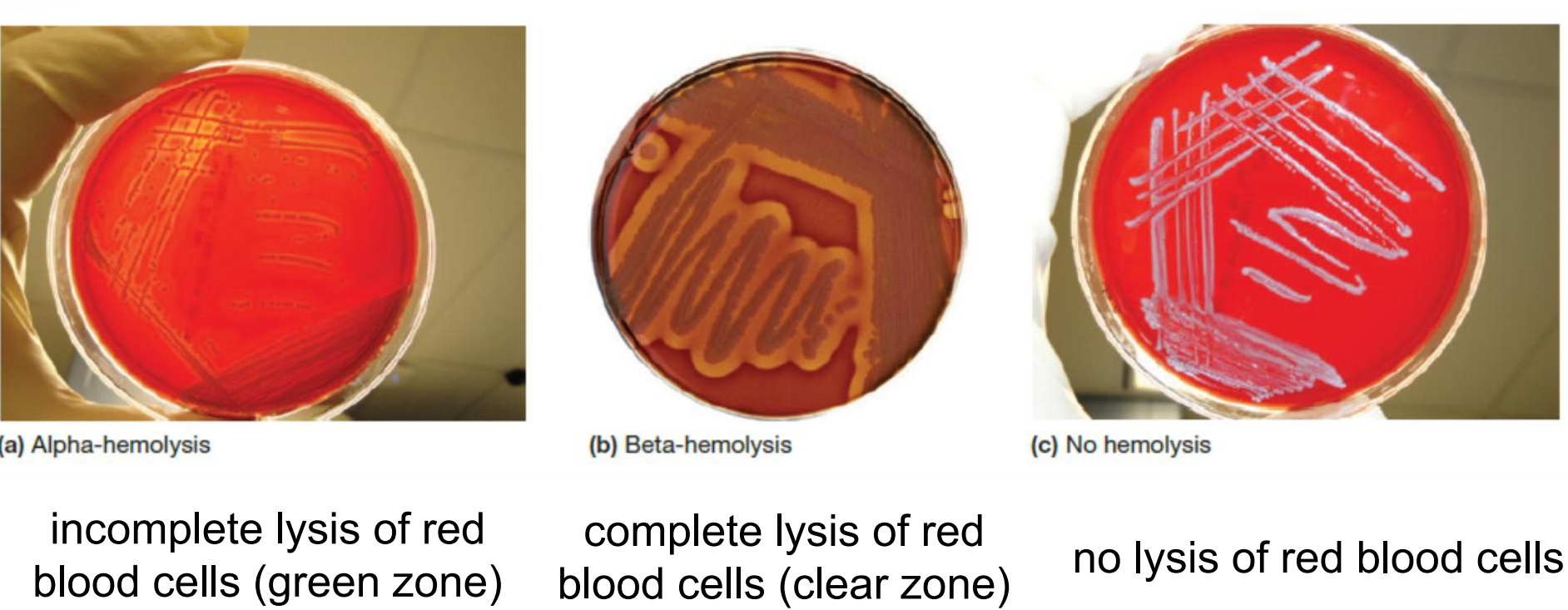
七、Actinobacteria 放线菌门: The High G + C Gram-Positive Bacteria
High G + C Bacteria
Actinomycetes (order Actinomycetales 放线菌目)
- Gram-positive, aerobic bacteria that produce filamentous cells called hyphae (菌丝(hypha的复数形式)) and differentiate into asexual spores
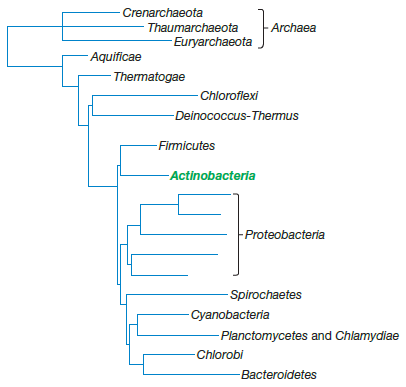
General Properties of the Actinomycetes 放线菌属
Source of most currently used antibiotics
Also produce metabolites that are anticancer, antihelminthic (抗蠕虫药), and immunosuppressive (免疫抑制剂)
Most are not motile
- motility is restricted to flagellated spores
Complex life cycle
Life Cycle of Actinomycetes
Involves development of filamentous cells (hyphae) and spores
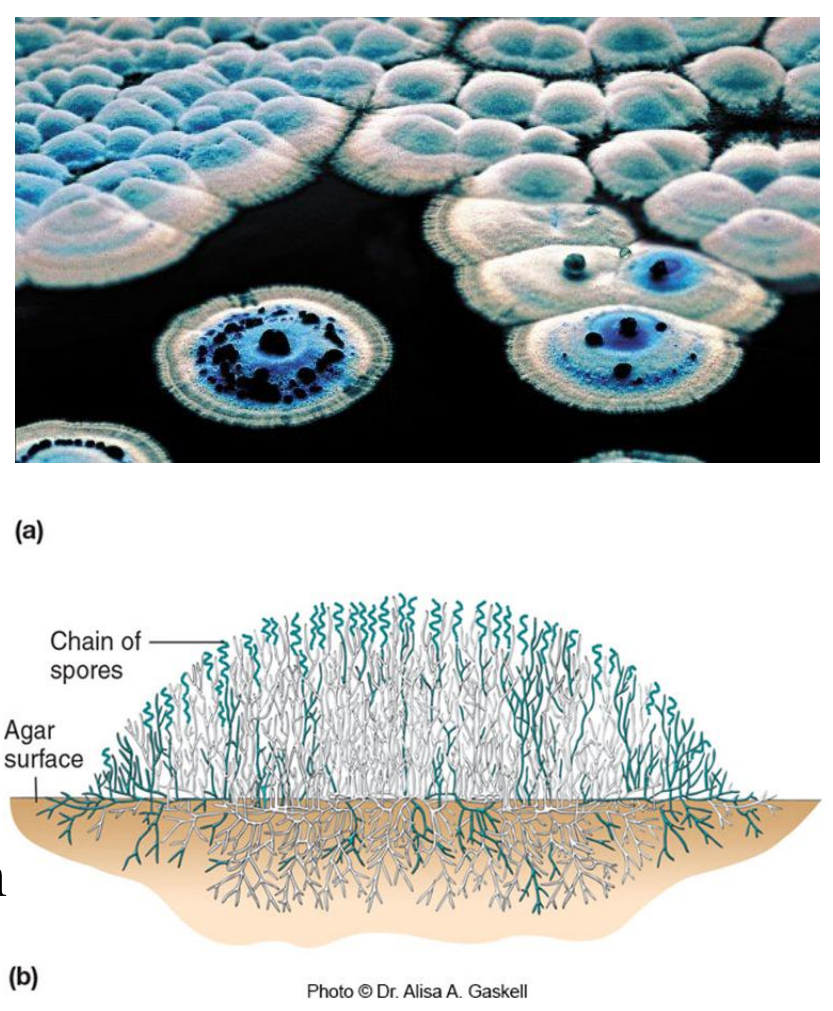
1. Aerial mycelium 气生菌丝体
form exospores (外生孢子)
produced in response to nutrient deprivation 营养剥夺/不足
withstand desiccation(干燥) but not heat resistant
spores dispersed(被分散) by wind for new bacteria

2. substrate mycelium 基内菌丝体
Genus Mycobacterium 分枝杆菌属
Aerobic and catalase positive
Straight or slightly curved rods that sometimes branch or form filaments
Very slow growing on culture media
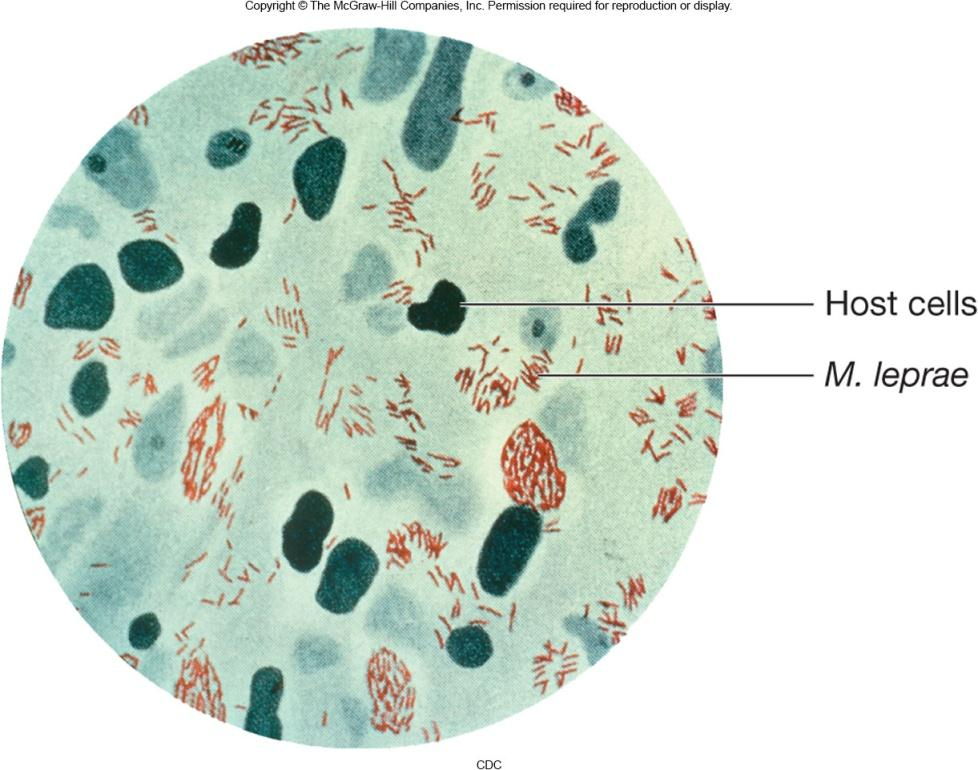
Aerobic and catalase positive
Straight or slightly curved rods that sometimes branch or form filaments
Very slow growing on culture media
1. Mycobacterial Cell Walls
Contain waxes with 60 to 90 carbon mycolic acids
cell wall very hydrophobic
impenetrable (不能通过的) by antibiotics
acid-fast
basic fuchsin(碱性品红;洋红) dye not removed by acid alcohol treatment
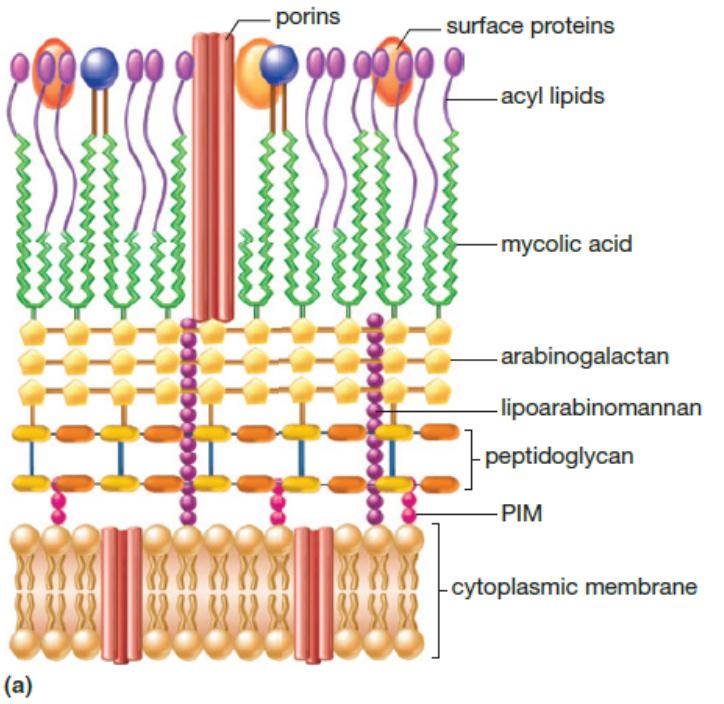
Order Streptomycetales 链霉菌目
One family, five genera
Aerial hyphae that divide in single plane to form chains of 3–50 nonmotile spores
G+C DNA content is 69–78%

1. Genus Streptomyces 链霉菌属
Are 1 to 20% of culturable soil microbiota
produce geosmin (土臭味素)
- volatile substance that is source of moist earth odor
important in mineralization ( 矿化) process
- aerobically degrade many resistant substances
- (e.g., pectin (果胶), lignin (木质素), and chitin (几丁质))
Produce vast array of antibiotics and other bioactive compounds
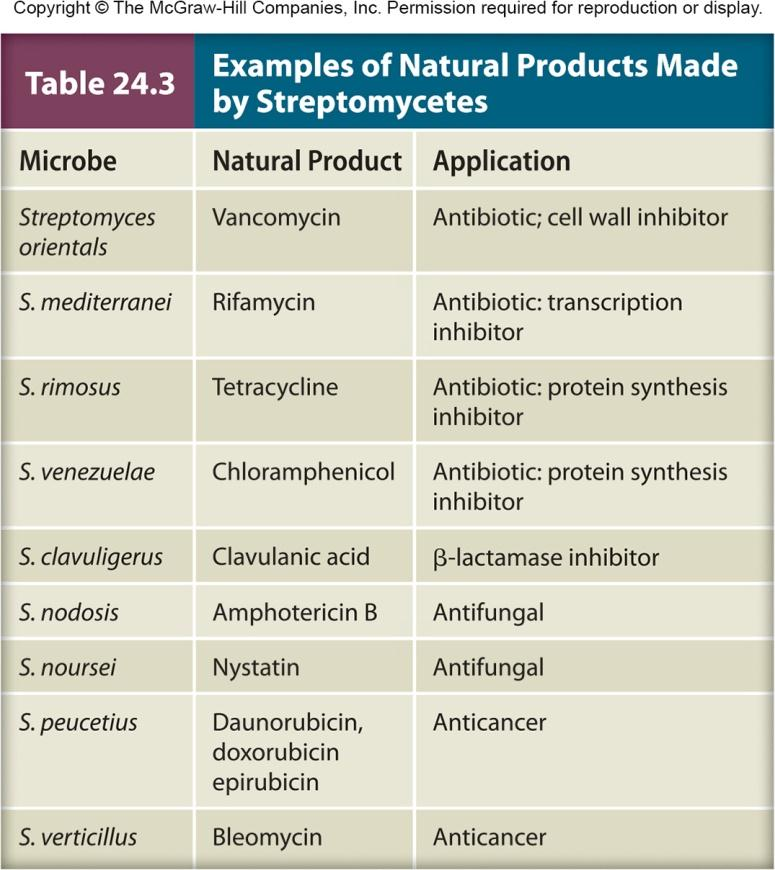
八、The Protists 原生生物
Protists Taxonomy
Difficult to define due to vast differences in protists
Very much in flux and an area of active research
New classification scheme is based on that of the International Society of Protistologists
- doesn’t utilize hierarchical ranks (class and order)
Overview
Eukaryotes
Over 65,000 different single-celled life forms
Most are unicellular, free living
Lack the level of tissue organization present in higher eukaryotes
Grow in a wide variety of moist habitats
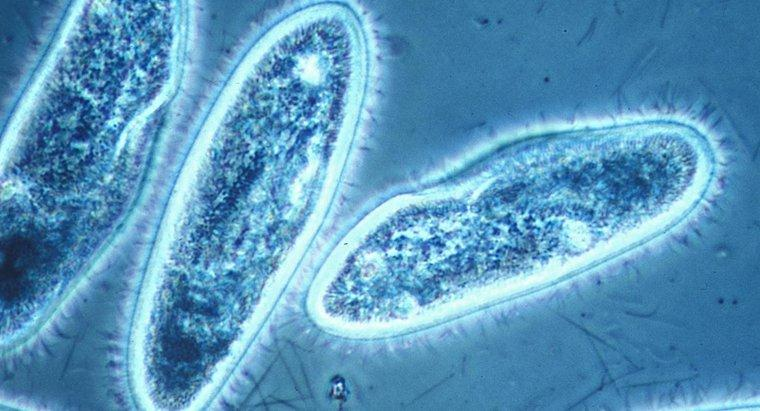
Protozoa are chemoheterotrophic protists
saprophytes 腐生物 – nutrients obtained from dead organic matter through enzymatic degradation
osmotrophy 渗透营养 – absorb soluble products
**holozoic nutrition 全动物营养 ** – solid nutrients acquired by phagocytosis 吞噬作用,噬菌作用
Photoautotrophic(能光合自养的) protists
- strict aerobes, use photosystems I and II for oxygenic photosynthesis
Mixotrophic(混合营养的,兼养的) protists
- use organic and inorganic carbon compounds simultaneously
Protist Morphology
Osmoregulation Food ingestion 渗透调节食物的摄入
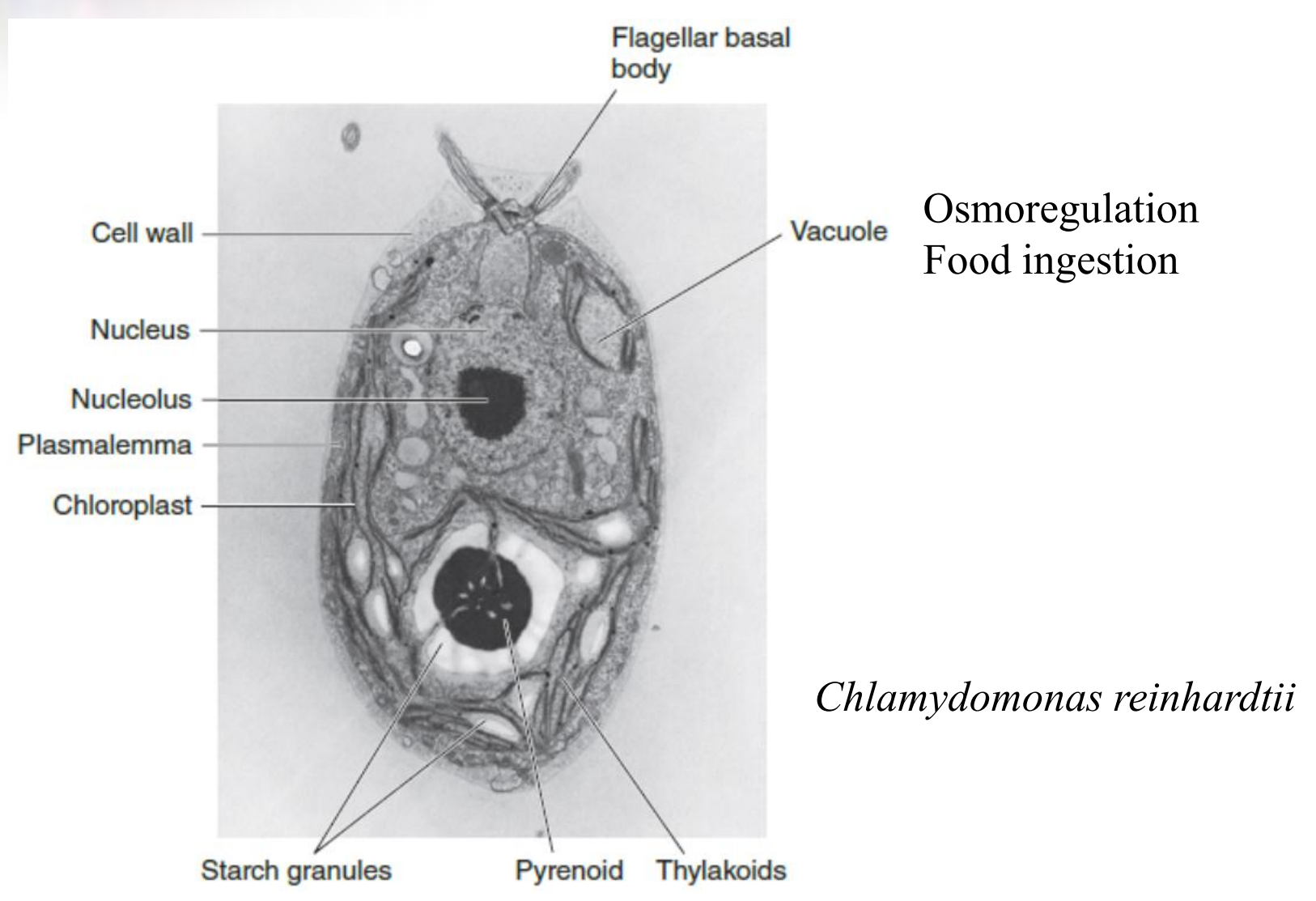
Encystment and Excystment
1. Encystment 胞囊形成,成囊
A process to form a dormant (cyst,潜伏的,蛰服的,休眠的) structure with a cell wall and very low metabolic activity
protects against environmental changes
sites for nuclear reorganization and cell division
serve as a means of host to host transfer for parasitic species
2. Excystment 脱包囊
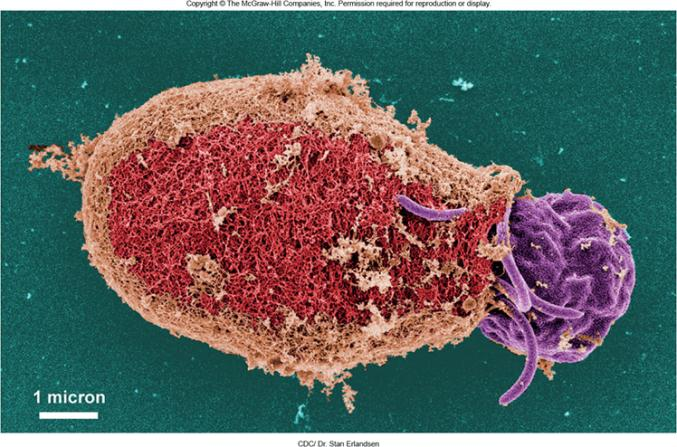
Protist Reproductive Cells and Structures
Protists have asexual and sexual reproduction
Asexual stage usually binary fission
Sexual stages use fusion of gametes in syngamy(配子配合;两性生殖) process
This can occur within a single individual (autogamy 自花授粉, 自体受精) or between individuals (conjugation 接合)
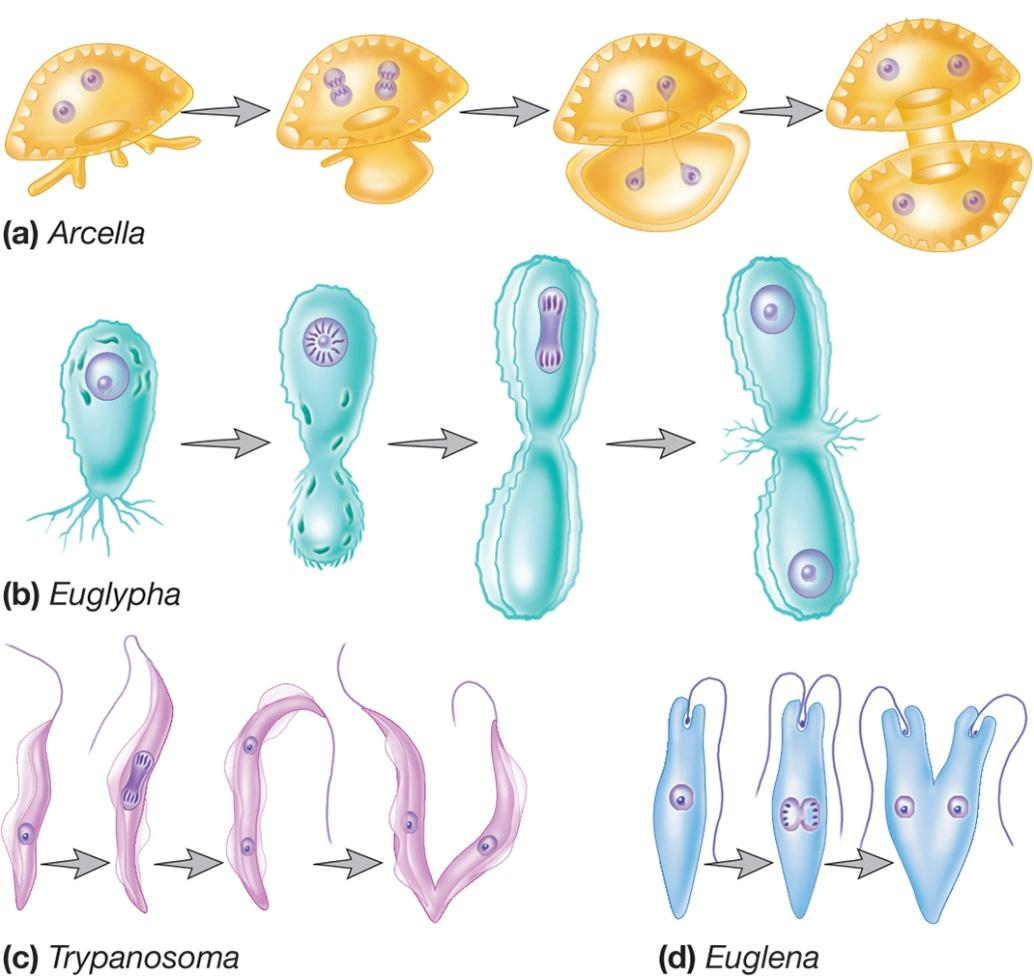
Super-Group Amoebozoa
Reproduce by binary or multiple fission
Naked amoebae are surrounded only by a plasma membrane
Testate amoebae 有壳变形虫
- plasma membrane covered by material made by amoebe or obtained from the environment
Amoeboid motility - use of pseudopodia(伪足) for locomotion(移动) and feeding
1. Shape of pseudopods 伪足
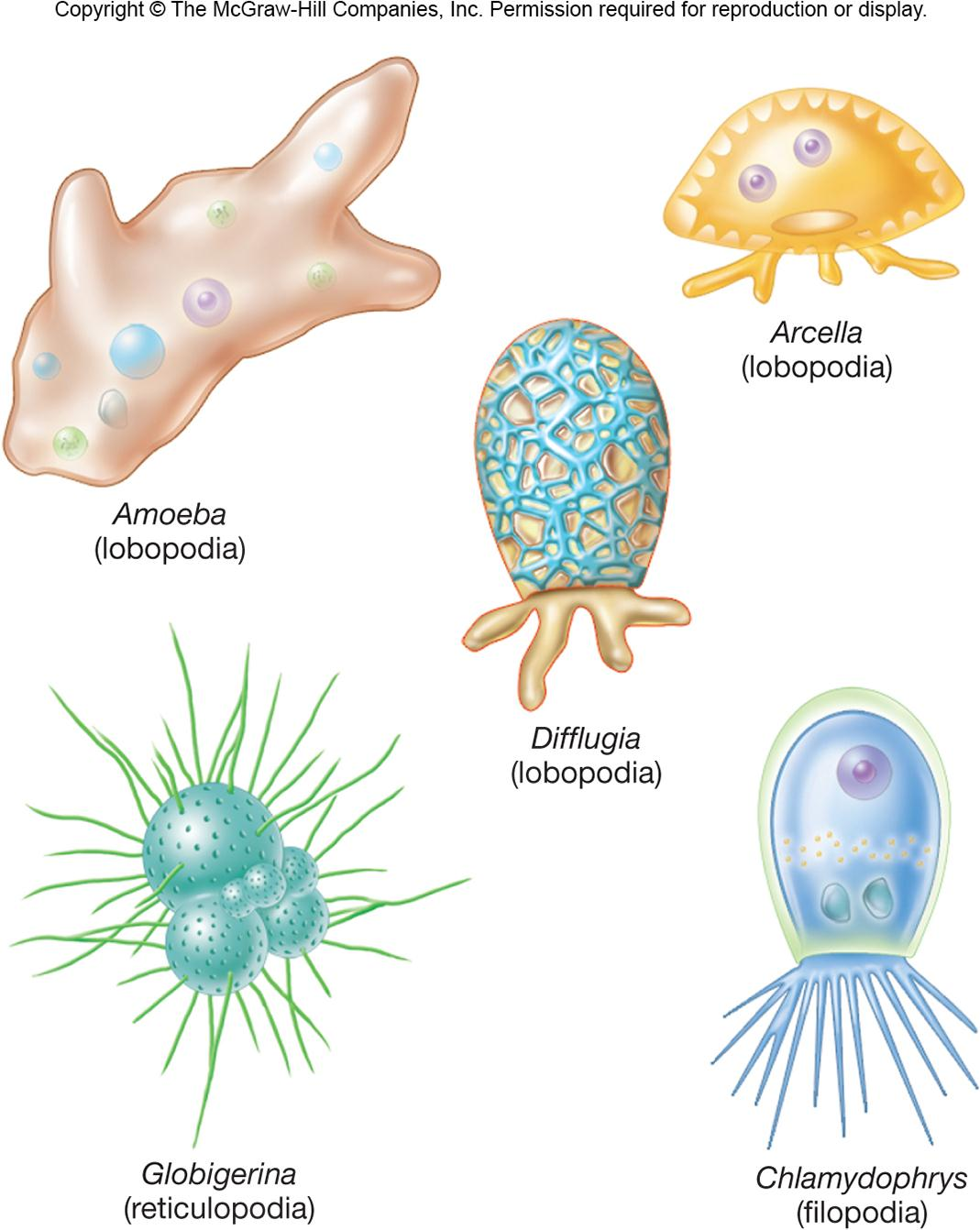
Lobopodia((复)叶足) – rounded
Reticulopodia(网状伪足) – netlike mesh
Filopodia(丝状伪足) – long and narrow
Eumycetozoa “Slime Molds”黏菌
Have been classified as plants, animals, or fungi
Group includes
myxogastria 黏腹菌 (the acellular(非细胞的) slime mold)
dictyostelia 网柱黏菌亚纲 (the cellular slime mold)
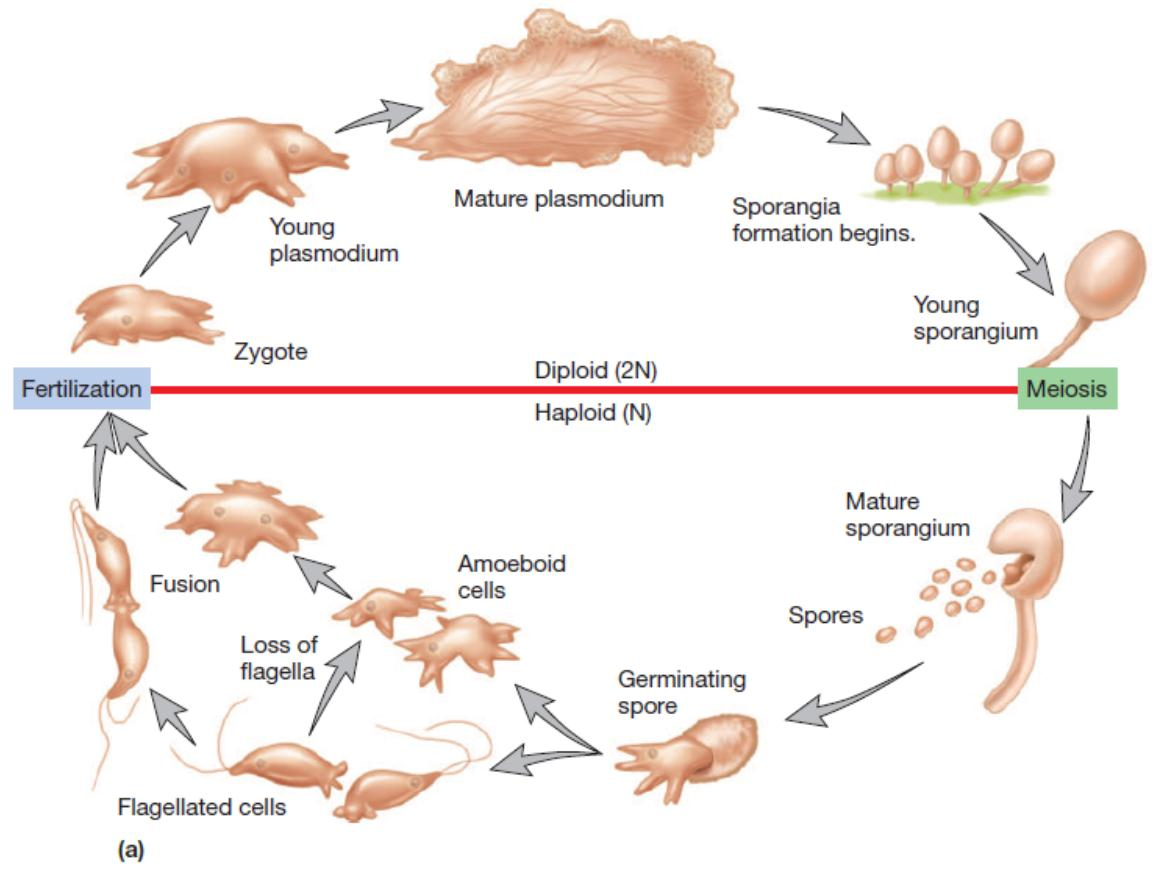
Plasmodium(原形体,变形体,疟原虫) lacks cell membrane
1. Dictyostelia (Cellular)
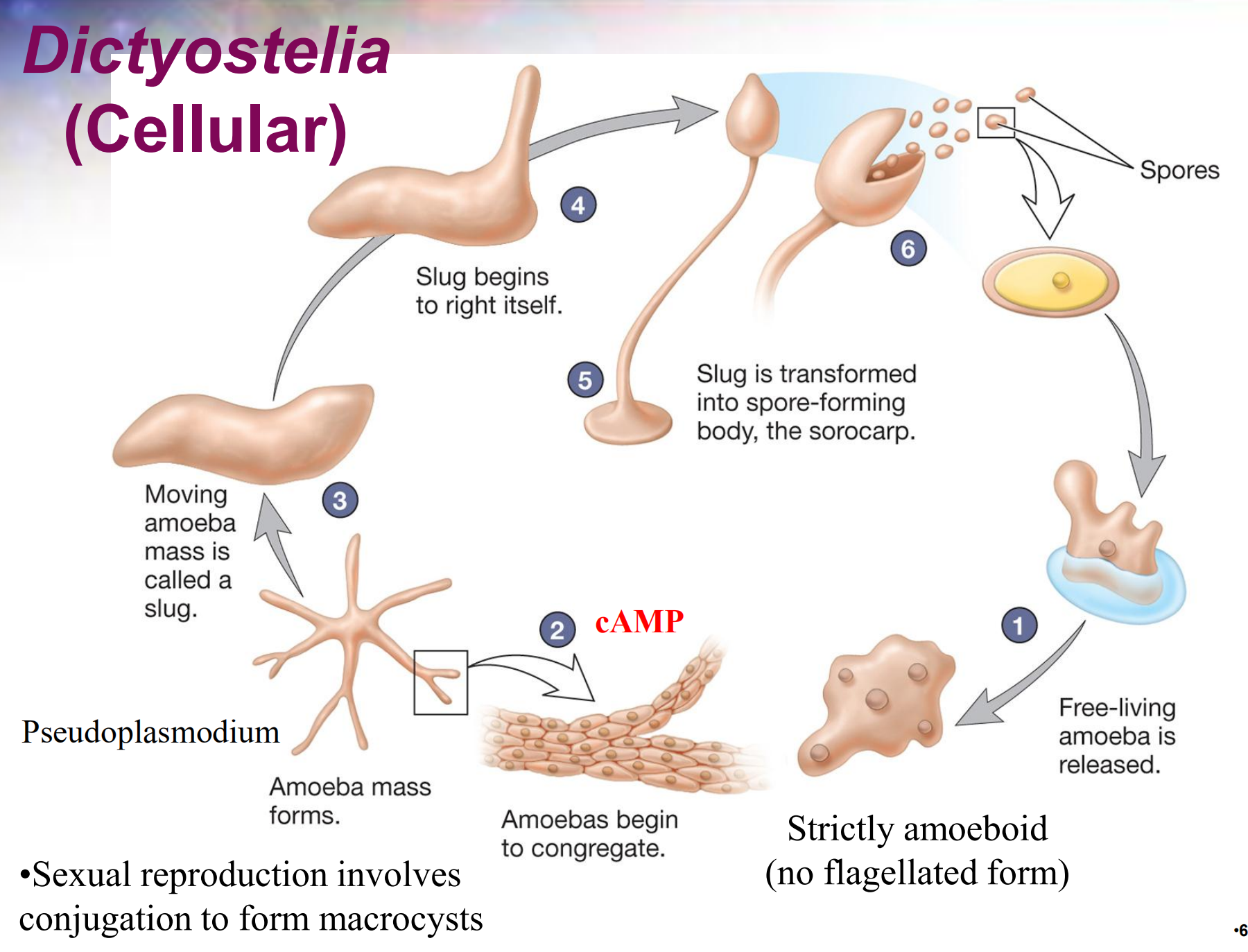
Pseudoplasmodium([无脊椎] 伪原质团)
Sexual reproduction involves conjugation to form macrocysts(大囊肿)
九、The Fungi (Eumycota,真菌门)
True Fungi: Eumycota
Eukaryotic, spore-bearing
Chemoorganoheterotrophs 化能异养型
Saprophytes 腐生物
absorb nutrients from dead organic material by releasing degradative enzymes
osmotrophy 渗透营养 - absorb soluble products
Lack chlorophyll
Reproduce sexually and asexually
Taxonomy of Fungi
90,000 fungal species have been described, possible 1.5 million
- six major fungal groups
- Ascomycota 子囊菌门
- Basidiomycota 担子菌门
- Glomeromycota 球囊菌门
- Zygomycota 接合菌门
- Chytridiomycota 壶菌门
- Microsporidia 微孢子虫
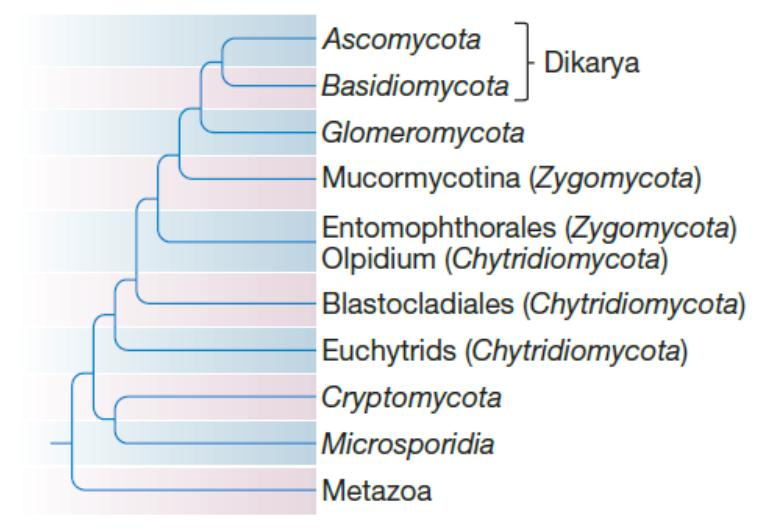
Basidiomycota and Ascomycota are dikarya 双核亚界
two parental nuclei are initially paired
nuclei fuse, undergo meiosis, produce haploid progeny

Fungal Structure
Cell walls composed of chitin polysaccharide
Single-celled microscopic fungi = yeasts
Body/vegetative structure of a fungus
thallus(菌体,叶状体;叶状植物) consists of long, branched hyphae filaments tangled into a mycelium([微生物]菌丝体;[微生物]菌丝) mass
multicellular fungi are called molds

Fungal Reproduction
1. Asexual reproduction
Parent cell undergoes mitosis to form daughter cells
May proceed through a spore form
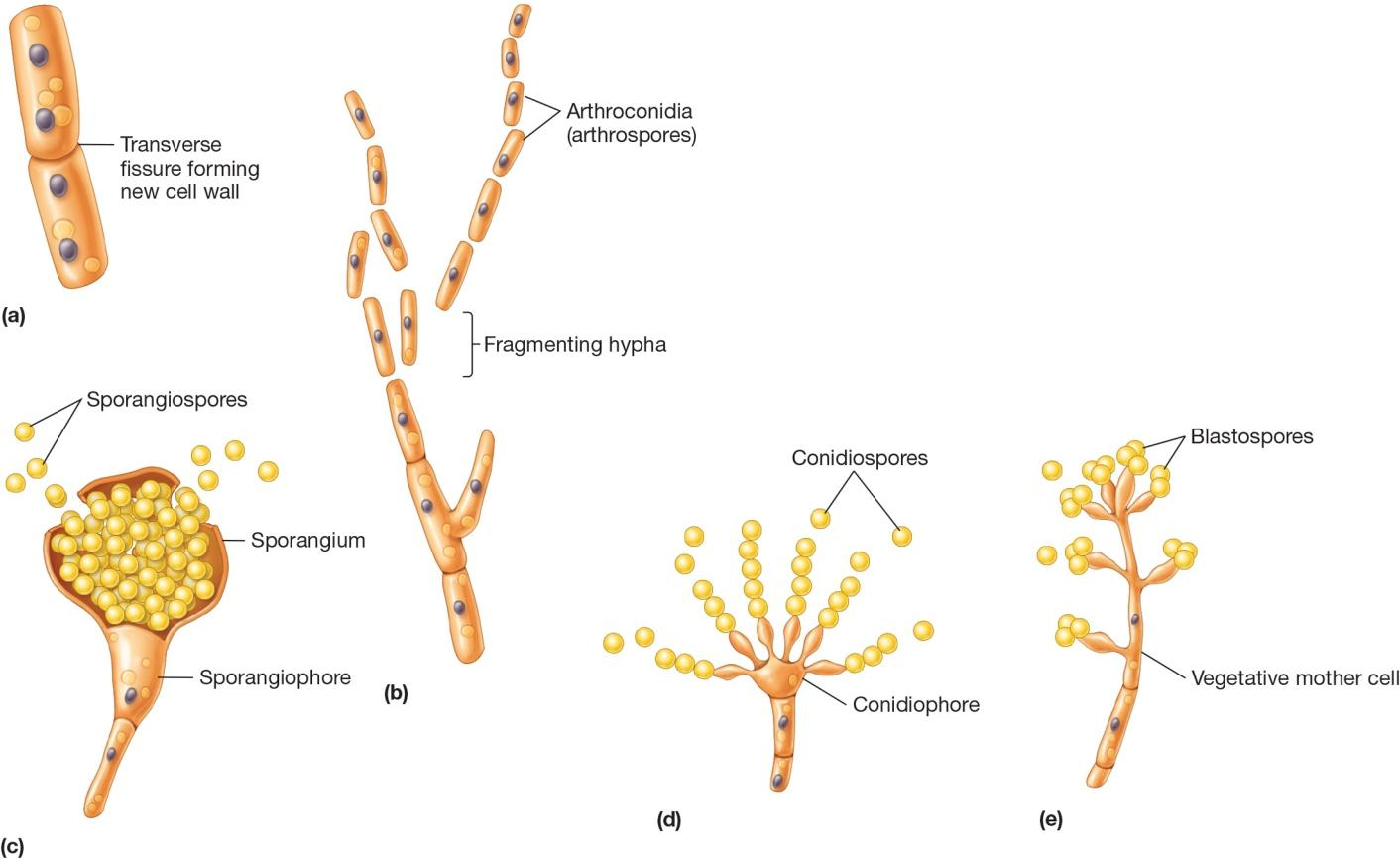
2. Sexual reproduction
Sexual reproduction
Involves fusion of compatible nuclei
Homothallic 同宗配合的: Sexually-compatible gametes are formed on the same mycelium (self-fertilizing)
Heterothallic 雌雄异株的;异宗配合的: Require outcrossing between different, yet compatible mycelia
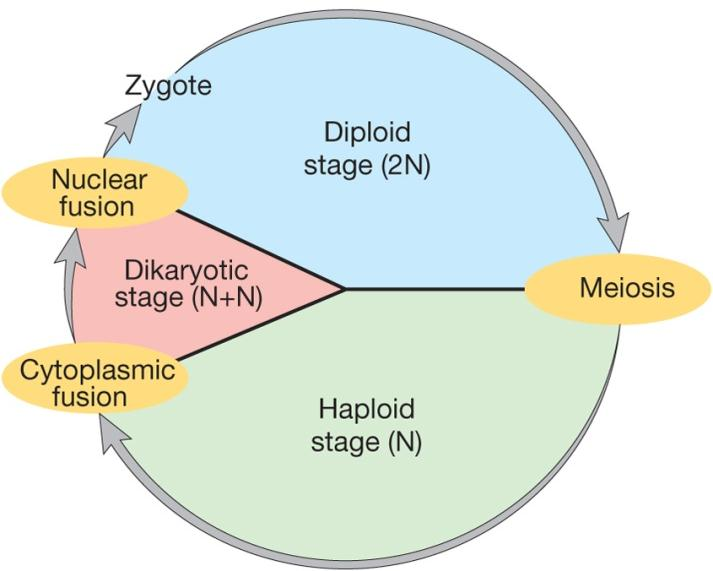
Zygomycota 接合菌门
Zygomycetes
Form coenocytic hyphae (合流菌丝) containing numerous haploid nuclei
Most are saprophytes 腐生物
- a few are plant and animal parasites
Some of industrial importance
- foods, antibiotics and other drugs
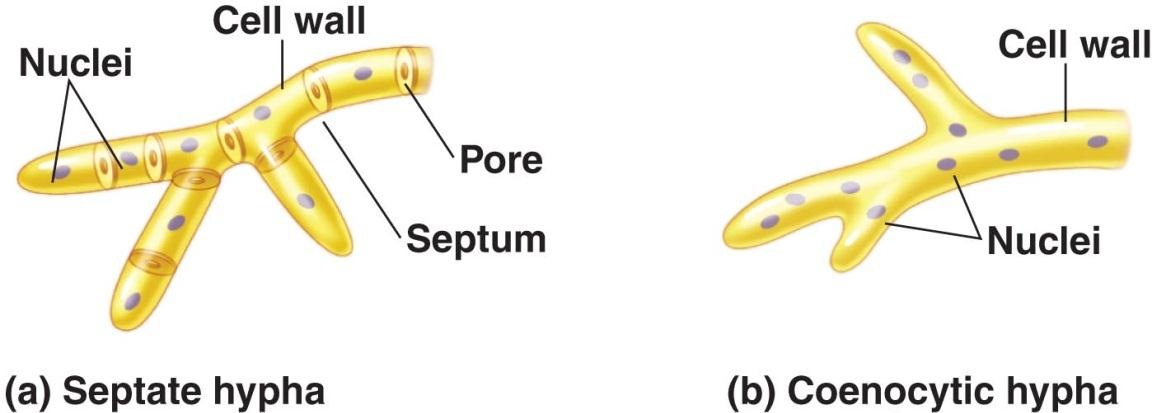
Usually reproduce asexually by spores that develop at the tips of aerial hyphae(气生菌丝)
Sexual reproduction occurs when environmental conditions are not favorable
requires compatible(可以并存的, 相容的, 协调的) opposite mating types
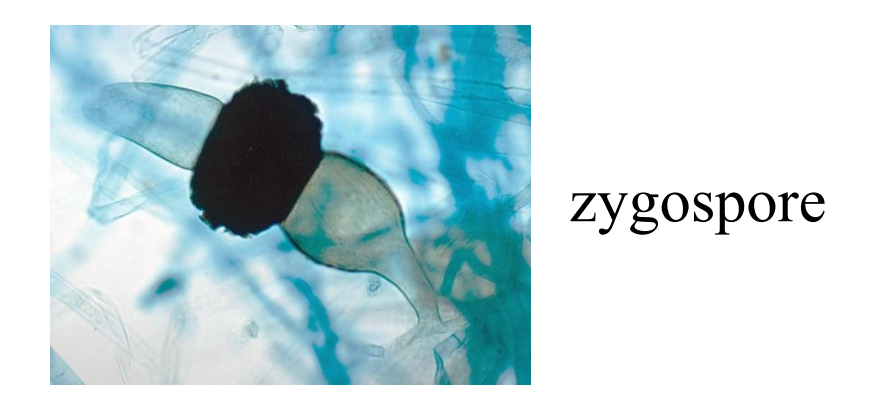
1. Genus Rhizopus 链霉菌属
Rhizopus stolonifer 葡枝根霉
grows on surface of moist carbohydrate rich foods
hyphae quickly cover surface as rhizoids(假根), absorb nutrients
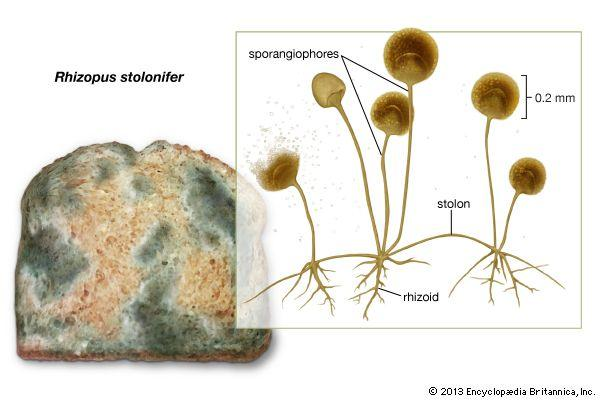

Ascomycota 子囊菌门
Ascomycetes or sac fungi
- found in freshwater, marine, and terrestrial(陆生的) habitats
- red, brown, and blue-green molds cause food spoilage
- some yeasts and truffles are edible
- some are human and plant pathogens
- some used as research tools
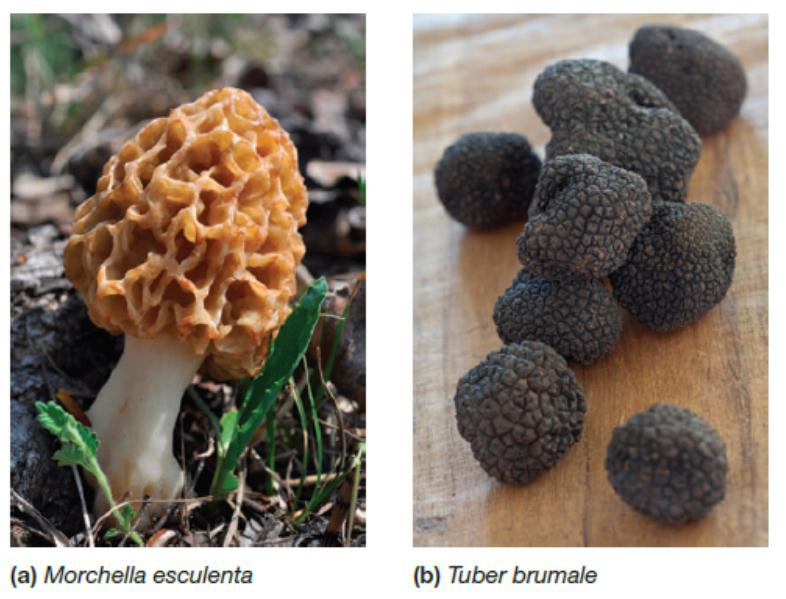
1. Ascomycota Yeast Life Cycle
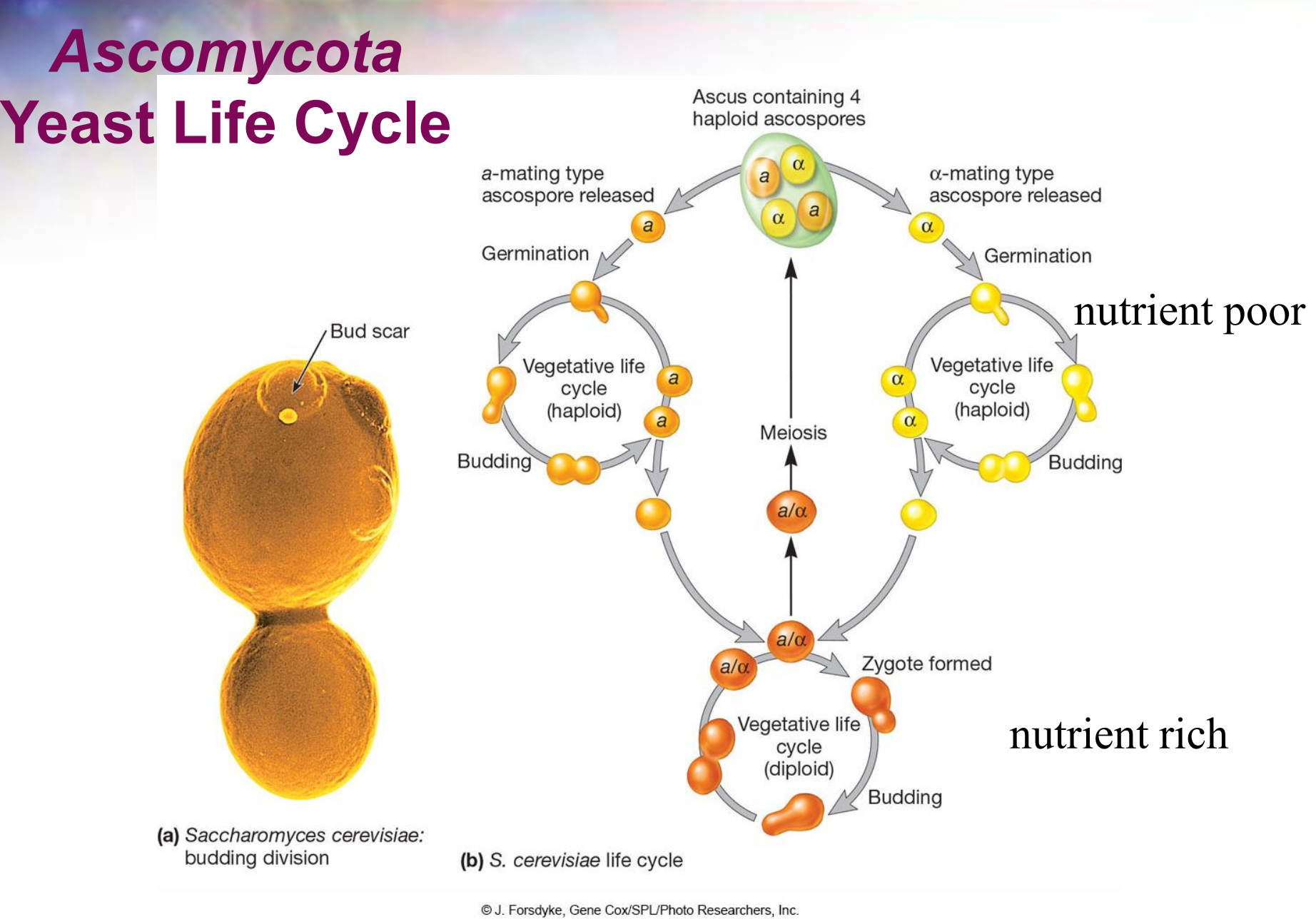
2. Filamentous Form Life Cycle
Asexual reproduction - conidia((复)分生孢子,单 conidium)
Sexual reproduction
opposite mating types form zygote
ascus (子囊) formation with ascospores (子囊孢子)
子囊(ascus)是子囊菌门真菌通过单倍体胞核进行有性生殖并辗转产生而产生子囊孢子的细胞。子囊一般位于产囊菌丝的顶端,形状不一,多数子囊呈现圆柱状,也有瓶状或棒状。
子囊孢子(英语:ascospore)是一种真菌的孢子,为子囊菌门真菌的有性孢子,在子囊中产生。
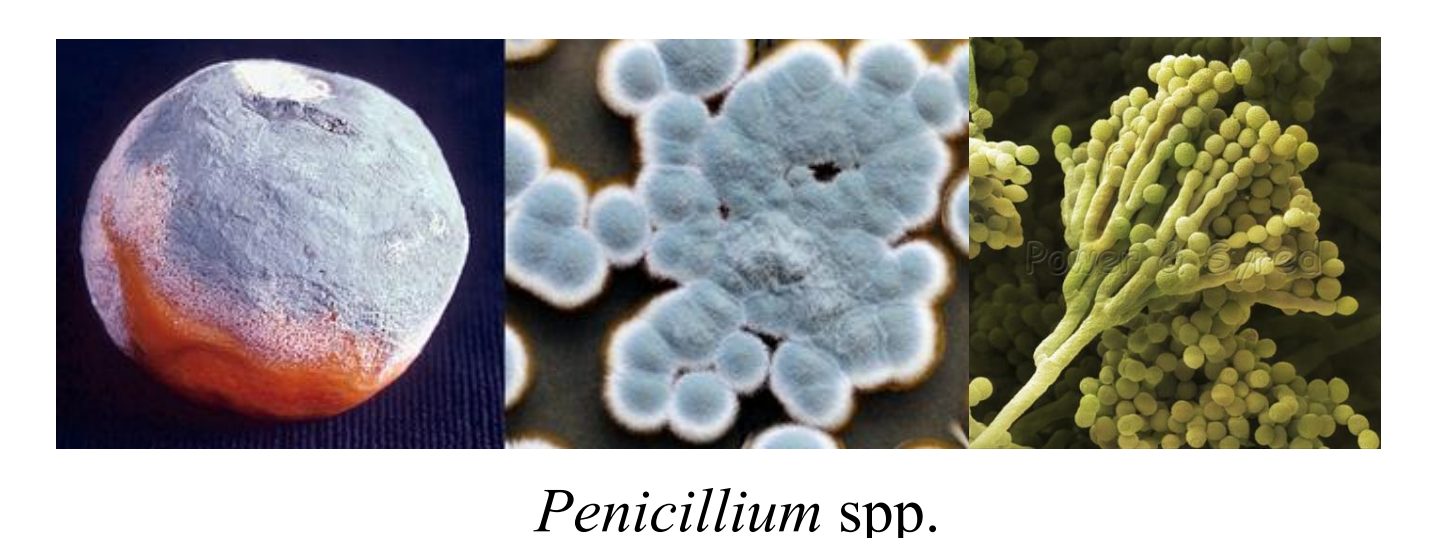
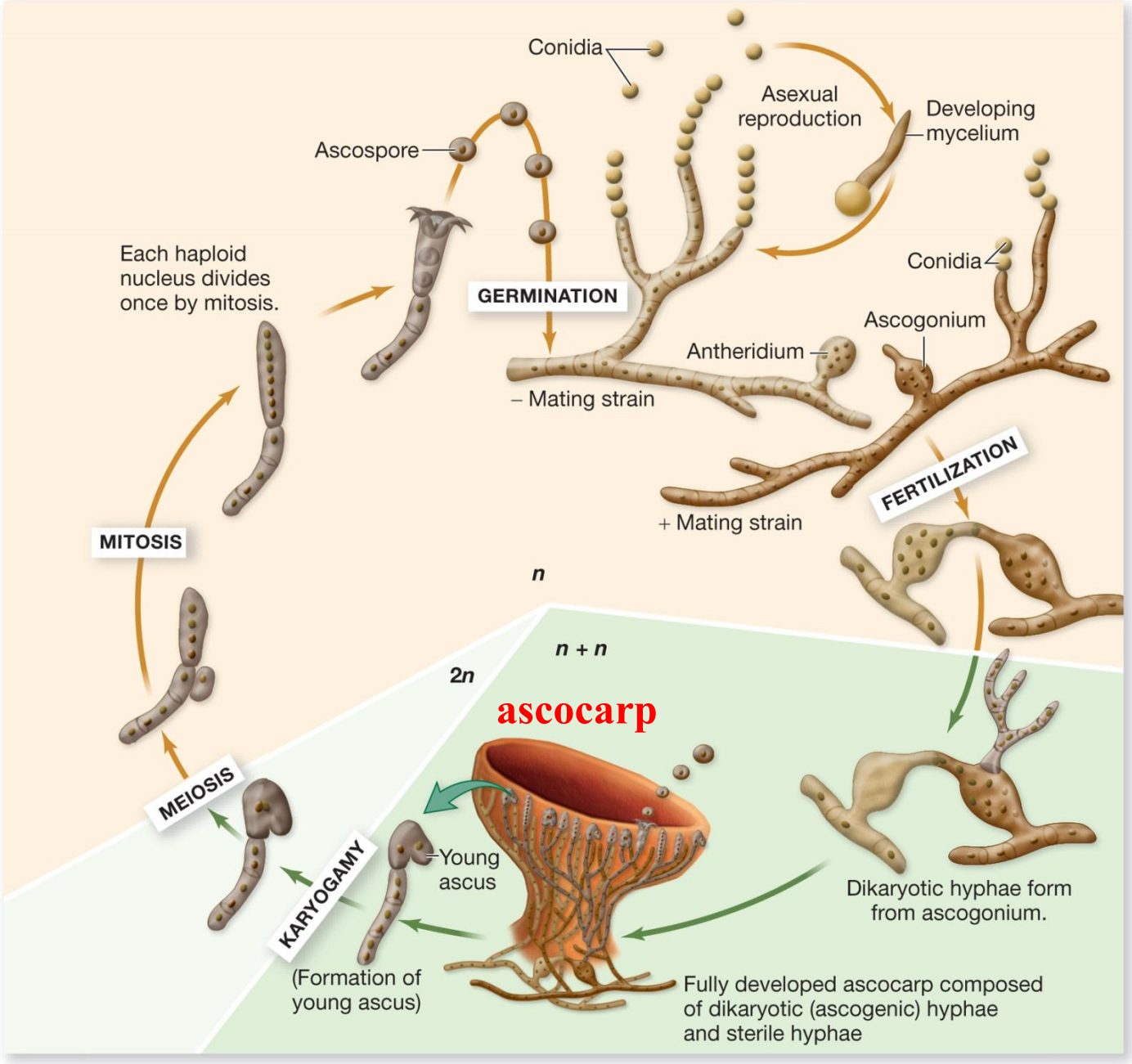
Ascocarp 子囊果: An ascocarp, or ascoma (plural: ascomata), is the fruiting body (sporocarp) of an ascomycete phylum fungus. It consists of very tightly interwoven hyphae and may contain millions of asci, each of which typically contains four to eight ascospores.
Basidiomycota 担子菌门
Basidiomycetes (club fungi)
examples include rusts(锈病), shelf fungi(架子真菌), mushrooms, puffballs(马勃), toadstools(毒蕈)
sexual reproduction form basidium((某些真菌的)担子)
basidiospores(担子孢子) are released at maturity

